VOLLEYBALL | FOOTBALL | PICKLEBALL
BIRDS | ANIMALS | BOATS | PLANTS | HEALTH
WELLBEING | HOLIDAYS | EXERCISE | VOLUNTEERING




VOLLEYBALL | FOOTBALL | PICKLEBALL
BIRDS | ANIMALS | BOATS | PLANTS | HEALTH
WELLBEING | HOLIDAYS | EXERCISE | VOLUNTEERING



One in four mammal species like the hazel dormouse is at risk of extinction. The Woodland Trust creates and protects thriving woodland havens across the UK, so rare and threatened wildlife has the healthy habitat it needs to survive.
Help save the dormouse. Join us as a member from just £4 a month. Scan the QR code or visit woodlandtrust.org.uk/join





Kaye McIntosh is a freelance writer who covers a wide range of health and wellbeing issues. The daughter of a retired civil servant, Kaye lives near St Albans, and is a vegetarian who isn’t very good at cooking.
Sally J. Hall is a journalist who has written on health and parenting issues for many years. She is the author of three books including Plant Based Baby. When not at her desk, she can usually be found walking across North London’s parks and heaths and she likes to get at least three or four miles under her belt each day.


Thalia Griffiths is a journalist who lives in Hastings. After 30 years writing about Africa, she now focuses on local climate and nature campaigns. A keen birder who took up the hobby more seriously during Covid, she edits the Sussex Ornithological Society newsletter and spends a great deal of time in draughty birdwatching hides.
Rosalind Ryan has been a health, fitness and travel journalist for more than 20 years, writing for national newspapers, magazines and websites. She currently splits her time between Brighton and Barcelona, where she lives on a sailing boat with her husband.
4 Editorial Welcome to the Podium spring 2024 issue
5 Spring forward
Enhance your health, home and happiness
8 Team spirit
Football and rugby games and tournaments
12 Watch the birdie21st-century-style
The hides, the species, the apps...birdwatching updated for today
15 Active Wellbeing around-the-world challenge
Responses to CSSC’s wellbeing challenge. How did we all do?
18 See you down at the lido
Outdoor swimming, urban style: the return of the lido
21 Get fishing
How CSSC partner the Angling Trust can get you out on the waterside
22 Animal magic
A trip to the zoo delights us all from babyhood on!
27 Are you walking comfortably?
Best feet forward: we show you stride out this spring

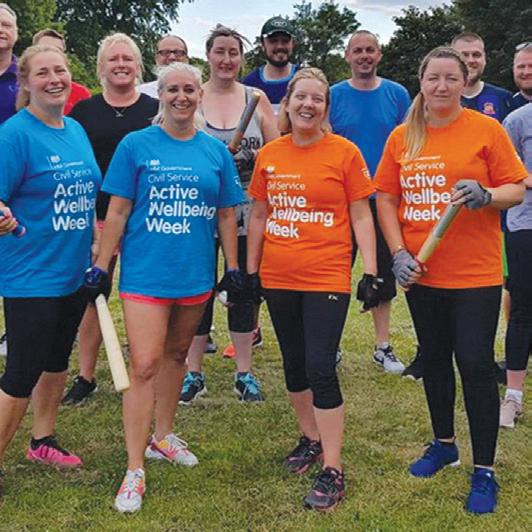
Activating
on page 15
30 Are your feet festival-ready?
Walking festivals are gaining in popularity
32 Two’s company
Could your exercise routine improve with the boost of a buddy? We look into it
34 Getting in a pickle Pickleball is becoming very popular. How is it played (and why is it called that?)
36 A good-value week away CSSC’s many savings helped one couple take a break in style – affordably
39 Tapas and tailwinds
The Americas Cup is coming to Barcelona
42 On the ball
Ever since 1895, volleyball has been popular with players of all abilities
44 A life of service
Hedley Featherstone tells us about volunteering and his commitment to archiving CSSC’s history
46 We’ll always have Paris
The Summer Olympics return after a century
50 Health facts or fictions?
Popular health advice under the microscope
 Richard Hemley
Richard Hemley
Dear Member
Spring has sprung, which means that as our floral and faunal friends rise from their winter slumber, many of our events, activities and partners are waking up as well. It’s such a great time to get out and explore the UK and all its beauty, history and communities. And your CSSC membership is the perfect companion, making it possible to share our offers and opportunities with your friends, colleagues and loved ones.
Speaking of which, throughout 2023 and 2024, we’ve launched and will be launching some fantastic new partnerships, with great days out and optional health benefits for everyone to make use of. If you don’t currently receive our emails or visit the website frequently, you could be forgiven for not being aware of these great offers. So, if I have one suggestion this issue, it’s that you sign up to receive our emails, log on to your membership website to view our latest offers and update your communication preferences, so you’re always kept up to date with all CSSC’s benefits.
One of those new partners we introduced last year, which I’m particularly proud of, is ZSL London and Whipsnade conservation zoos. Not only do they make fantastic family days out, but with the tremendous work they do in protecting habitats and species around the world, they really speak to me personally and as a CSSC member. I’ve gone into a little detail as to why Whipsnade in particular means so much to me and my family on page 22.
Elsewhere in Podium you can also read a holiday road trip diary from one of our members, get some excellent walking and workout tips, and hear from a stalwart CSSC member about his mission to catalogue our history. This issue is also fresh off the back of another hugely successful Active Wellbeing challenge. Congratulations to everyone who took part in this awesome active initiative – it’s been our most successful event since it began six years ago. And this February’s challenge seemed to strike a particular chord with everyone, especially those of us who need a little extra nudge to overcome our barriers to getting active. Have an adventurous spring and summer.
Richard Hemley, Editor



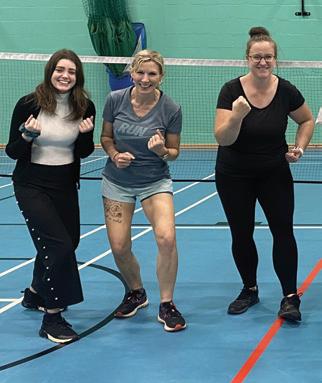



You don’t always have to make grand gestures: easy does it!

Even though many of us find that our New Year resolutions have crumbled a little (OK, a lot) by now, we often find that this is the point in the year when we feel the impetus to make a new start. This time, use the feeling the spring gives you to make some subtle changes in your life rather than giant overhauls that often fail at the first hurdle.
Here are some tried-and-tested ways to make you feel more positive – and help you set your intentions for the following seasons.
Were you one of the many people who took advantage of a ‘great CSSC deal’ on gym membership in January? The new year is traditionally the most popular time when people join a gym, try a class and get in shape. But because there are loads of people in the gym, at least for the first few months,
this can put others off if they have to compete for equipment or are embarrassed by their inexperience.
However, this doesn’t have to be the case – and remember, most new joiners are in the same position. Often they too haven’t been to a gym in years, they’re out of practice and they don’t know how the equipment works. But this shouldn’t discourage you –any of you– from continuing. It will take time, no two ways about it. Often, people believe that the sheer act of joining a gym will work some kind of magic. The truth is that losing weight and getting fit can be hard work; but it can still be fun.
It helps to explore different styles and understand what you’re in the gym for. Is it losing weight, getting active, setting goals or to find a new community? This will help you choose which classes or equipment to focus on. You can ask around for quiet times to visit and soon enough you’ll find that like-minded
community which shares your goals and ambitions. You may even find a gym buddy for mutual support (see our feature on page 30).
Try out each class (and different teachers, too) until you find something that gels. It could be anything from kettlebells to hot yoga! Do a little at first and build up to more, but don’t expect change to happen overnight. Some people find exercise really boring, too, so listen to some great music or an amazing podcast while you work out – that way, time will pass more quickly and you might have learned something at the same time.
Alternatively, get away from the gym environment altogether. Walking and running in the fresh air are both great for you, not just for the calories you can burn or the muscles you can tone. Being outdoors in some green space actually helps your mental health, too. Now that the short winter days are over, it’s lovely to be outside and to see nature coming back to life. Choose a circular walk from your home and back, or a route that takes you to work, and then add in a couple of treats along the way – 10 minutes’ meditation in the park and a cup of coffee, perhaps. You’ll see the new leaves, the spring blossom and the first flush of crocuses and daffodils and feel that things are really starting to liven up. If you get used to doing this two or three times a week, it will become a habit that’s hard to break – even when we head into winter again! (Take a look at our walking spread on page 27 for more ideas and details of the minimal kit you’ll need.)
Your mood can be affected by many external things, but do remember your internal world too – and we don’t mean your mind but your home environment. Perhaps you want to redecorate or to banish some gloomy colours and give your home a refresh. Fashions in interior design are changing from the dull creams and greys of the last decade to brighter, more eclectic styles. Take a look at these top six trends according to the interiors style bible, Good Housekeeping:
l textured, hard-wearing fabrics such as linen, wood, sisal and velvets;
l sustainability: items made from recycled plastics are popular, as are earth-toned shades for furniture and fabrics;
l colour drenching: also known as saturating, this means taking a colour across the whole room (walls, ceiling, paintwork, tiles and fixtures) – you can play it relatively safe with a pastel colour or make a massive statement when you choose a stronger shade;
l display (of materials, not ornaments): whether it’s exposed plaster, wood or slabs of natural stone, show it off; there’s also a trend for using big slabs

of stone and marble for work surfaces and splashbacks, as well as wrapped around islands or used as waterfall edges;
l statement lamps and unique curtain treatments;
l blue (the colour, not the mood): ultramarine is trending!
Not everyone has the freedom to play around with their home to a huge extent, but renters can make changes too. Explore adding colour using inexpensive articles that you can take with you when you move. Loose covers for sofas, a large statement rug, bright curtains, and a few prints on the walls can give your home personality and style.
Plants can also bring your home alive – quite literally! Place them in groups, with tall, large-leafed varieties at the back and smaller ones at the front, making sure you mix up the size, shape and colour of the leaves and flowers. Drape climbers from tall

You could even end up with a bit of a ‘side job’ to complement the day job…


shelves, and use stands and even jardinières to bring plants to a whole new level.
The longer, lighter days cheer a lot of us up – and also make it possible to think in a more measured, realistic way about how to enhance life. Along with the fun ‘quick hits’ of booking a few affordable things to do, why not think about building on your current skills and qualifications? If you start making plans now, you’ve got plenty of time to research options and book in for the next academic year.
If you feel that you are getting stuck at your current level at work, and that your skills could do with an update in order to give you a boost, think about adding some missing skills to your CV – perhaps this is the time to sign up for a course that will help you improve your future prospects. If you want to add an extra cherry to your professional cake, an Open University course or evening class may help you find a new skill and bolster your resumé. Or it may simply lead you down paths to discover more about subjects you are intrigued by. Learning for its own
sake can be great fun (remember you’re not being forced through school subjects any more!) and can help you achieve your personal goals.
Alternatively, perhaps it’s time to learn a more practical or artistic skill. Many people started crafting, baking and making during lockdown – would you like to go back to this? Think about how this might work for you without impinging on your current job, and how much time, realistically, you could devote to it. You could even end up with a bit of a ‘side job’ to complement the day job…
Whatever you decide to do, make use of the optimism of a new year to kick-start your plans for 2024. Good luck!
Check out our communities and hobbies page on the CSSC website, and find loads of great ideas on boosting your confidence and learning something new (store.cssc.co.uk/communities-hobbies). We also have classes and opportunities to try a new course to boost your CV with City Lit.

We look back at last summer’s football and rugby activities. Could this year top them?
Last summer saw an incredible line-up of sporting competition, with CSSC hosting tournaments in both men’s and women’s rugby and football. Teams from across the country joined together to celebrate our festival of sport and take on the best of the best of the civil service, public sector and armed forces.
In addition to great viewing, rugby offers opportunities to play, grow communities, purchase equipment and host taster sessions and events. And thanks to the sport’s increasing popularity and its expansion into more inclusive formats such as mixed, touch, wheelchair and walking, CSSC has needed no encouragement to grow our unique opportunities and offers.
Last summer, CSSC invited players to try out for selection for a chance to compete in our highly anticipated rugby tournament. It’s a good job that rugby players and fans are made of stern stuff. Thanks to the extensive downpours throughout match day, players from across the UK were truly tested, and more than rose to the occasion. And we owe huge thanks to the team at Maidenhead Rugby
Club, which was more than up to the task of hosting this extraordinary event. Players and volunteers alike were extremely enthusiastic about the venue, which matched the skills on display.
As a prelude to the main events, England Touch hosted a walking touch rugby session and exhibition match to showcase the inclusivity of rugby and highlight the openness and welcoming nature of rugby and its fans. Those who took part were incredibly helpful in sharing the benefits of this mixed game and invited early fans to come pitchside and have a try (no pun intended).
On the day we were honoured to be joined by professionals Ffion Lewis and Danny Wilson, who shared their vast experience of both playing and managing professional sides. Scrum half Ffion is among the first 12 professional Welsh female players, and has notched up 33 caps playing for the Wales women’s team; while Danny is coordinator, line-out and contact coach for the Harlequins, as well as a previous winner of the Challenge Cup title with Cardiff Rugby.
With three main games throughout the day, the exceptional talent on display was evident for all to




see. Berkshire All Stars took on RAF High Wycombe in a touch rugby exhibition match. CSSC England men’s team challenged Wales. And in a historic first, CSSC women’s team faced the Royal Navy and Royal Air Force team. The play was tough, made even tougher by the dreadful weather that day, but throughout all, the play was fair, and hard-won victories were welcomed and praised by everyone there.
A huge congratulations to CSSC Wales for beating England 22-7. And a big well done to the Royal Navy and Royal Air Force for defeating CSSC women’s team 25-8.
Perhaps it’s the nature of the closeness of rugby in particular, but when the last ball is kicked and the final whistle blown, teams come together to congratulate the victors, like no other sport. So the post-match medal presentation, dinner and guest speakers were well received by all and capped a stunning day of exciting, dramatic, energetic and uniting sport and entertainment.
The success of the Lionesses in the European Championships and last year’s World Cup has helped cement women’s football in the eyes and minds of the nation. Ever one to be ahead of the curve, CSSC has been championing women’s sport, including hockey, cricket, golf, tennis, rowing, athletics and football, for decades. And the recent drive and determination to host a women’s-only competitive match came to fruition last summer with our inaugural five-a-side football tournament.
watched the festivities unfold. As England’s third top goal scorer of all time, winner of the Golden Boot, Bronze Boot, consecutive league winner, International Player of the Year, Olympic athlete and famed Lioness, who helped the England national team win the 2022 Euros and qualify for this year’s Women’s World Cup, Ellen was extremely comfortable in the familiar surroundings of St George’s Park, and the perfect guest to witness the impressive skills on display on the field.
We are extremely grateful to Ellen for agreeing to spend the day with us and for meeting all the teams and players, posing for photographs and signing autographs (all day). And we were honoured to name the new trophy after our long-standing patron, the Duchess of Gloucester, who was gracious enough to attend and present the winners with their medals and trophy.
Footballing legend Ellen White MBE joined teams pitchside and watched the festivities unfold
A huge thanks as well as congratulations to everyone who took part in this year’s football festival and who truly made it an incredible and memorable experience for all. And well done to the CSSC teams who hosted this exceptionally wellenvisioned and well-delivered showstopping event. Teams from the NHS, the West Midlands Police, the Department for Education, the Land Registry, the Army, the London Fire Brigade and many others all took part with passion, heart and fair play. Special congratulations go to the Royal Navy women’s team, who lifted the Duchess of Gloucester Trophy. The team hails from bases across the UK, coming together to take on and defeat the best of the best.
An occasion this auspicious deserved an equally impressive arena in which to showcase the talent on display. The England training camp at St George’s Park in Burton upon Trent was the obvious choice; not just for its central location and accessibility, but for its history, status and connection to the England national side.
The indoor pitch was the perfect venue to play host to 18 teams of 150 civil servants, public sector colleagues and armed force members from across the nation, ensuring the remarkable surroundings were topped only by the impressive skills, dedication and determination on display.
As part of CSSC’s commitment to sharing exceptional, magical moments with our members, we were determined to make our first ever women’s five-a-side tournament a memorable one. So, to greet the players, coaches and spectators and share her incredible knowledge and passion, footballing legend Ellen White MBE joined teams pitchside and
It may sound like a cliché to say that everyone was a winner, but seeing the skills on display, hearing the enthusiasm and bringing teams together in such a manner genuinely feels like a tremendous victory –not only for CSSC members and their colleagues but for women’s football and female sport everywhere.
As two of our key priority sports, both rugby and football will feature heavily in our future line-up of men’s and women’s competitions. Whether it’s playing, coaching, spectating or funding, keep your eyes peeled for upcoming opportunities.
We expect this year’s tournaments to be even bigger. So remember to sign up for CSSC’s emails, and look out for this summer’s exclusive events kicking off soon!
Spring offers us the chance to get out in nature and explore a new birdwatching hobby – and yes, apps are available these days. By Thalia Griffiths
Birdwatching has long had a reputation as a pastime for introverted old men in beige waistcoats. But many people who spent Covid lockdowns observing nature in their immediate area started to get more interested and to realise that watching birds is a lot more fun than it sounds. With less traffic around, the wildlife obliged by being more visible – the RSPB reported a 70% increase in website visits during the first lockdown, with more than half the hits from people looking for help with bird identification.

What’s more, the enthusiasm has continued.
The RSPB reports keen participation for citizen science projects like the annual Big Garden Birdwatch, for which people spend an hour during the last weekend in January recording the birds in their immediate area. The project, which started in 1979 as an initiative with the children’s TV programme Blue Peter, provides an annual snapshot of how the UK’s garden birds are faring, and has built up into a significant data set over the years. The January 2021 Birdwatch

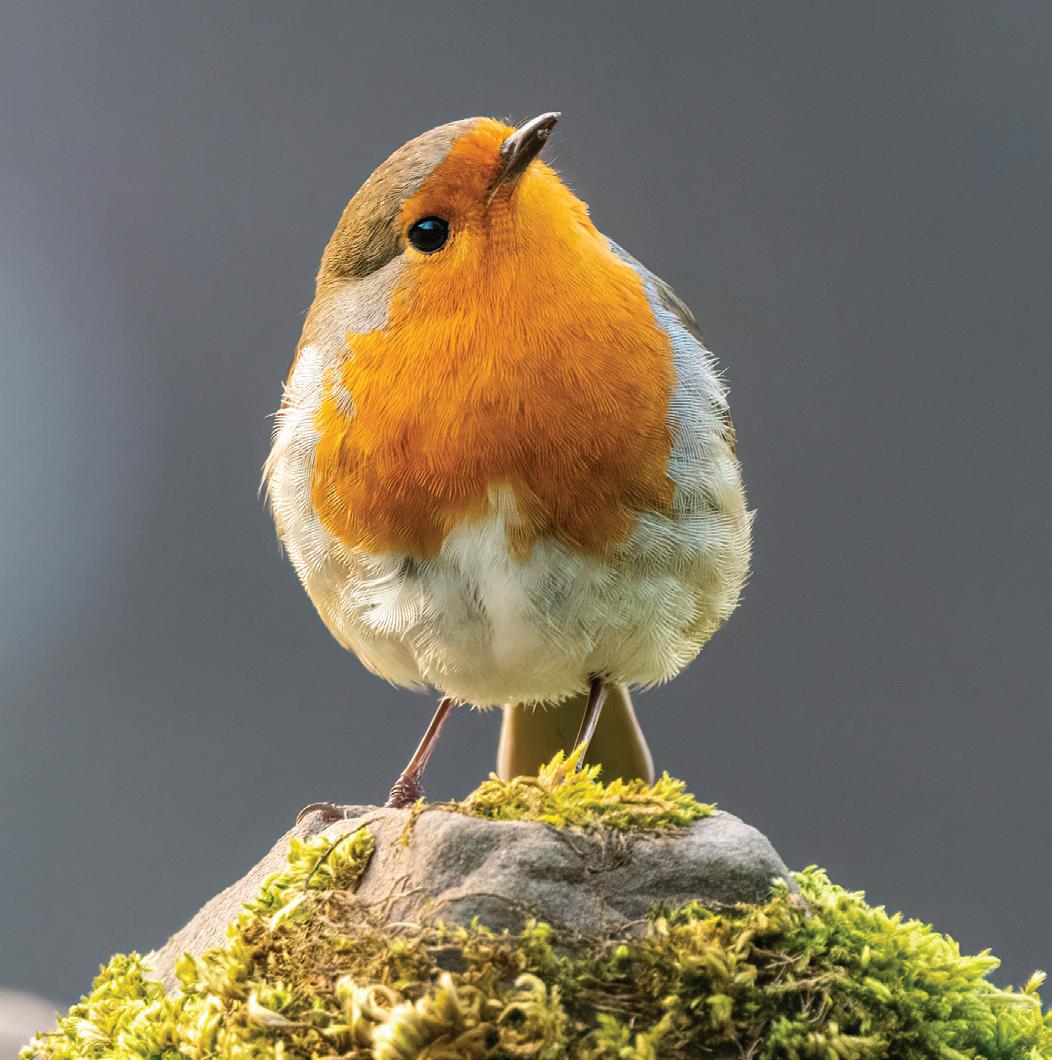
had around a million participants, almost double the usual number (540,000 people sent in sightings in January 2023).
So why not do some watching yourself? Spring is one of the best seasons for it. The birds are all out in their best and brightest plumage, singing their heads off to defend their territory and attract a mate.
A lot has changed since the first days of the Birdwatch – and not only because climate change has brought exotic species such as bee-eaters and glossy ibises to our shores. Nature reserves increasingly have eco-friendly visitor centres with keen, helpful staff offering activities and – crucially for a family day out – a cafe. Your local Wildlife Trust probably offers beginners’ courses, taster
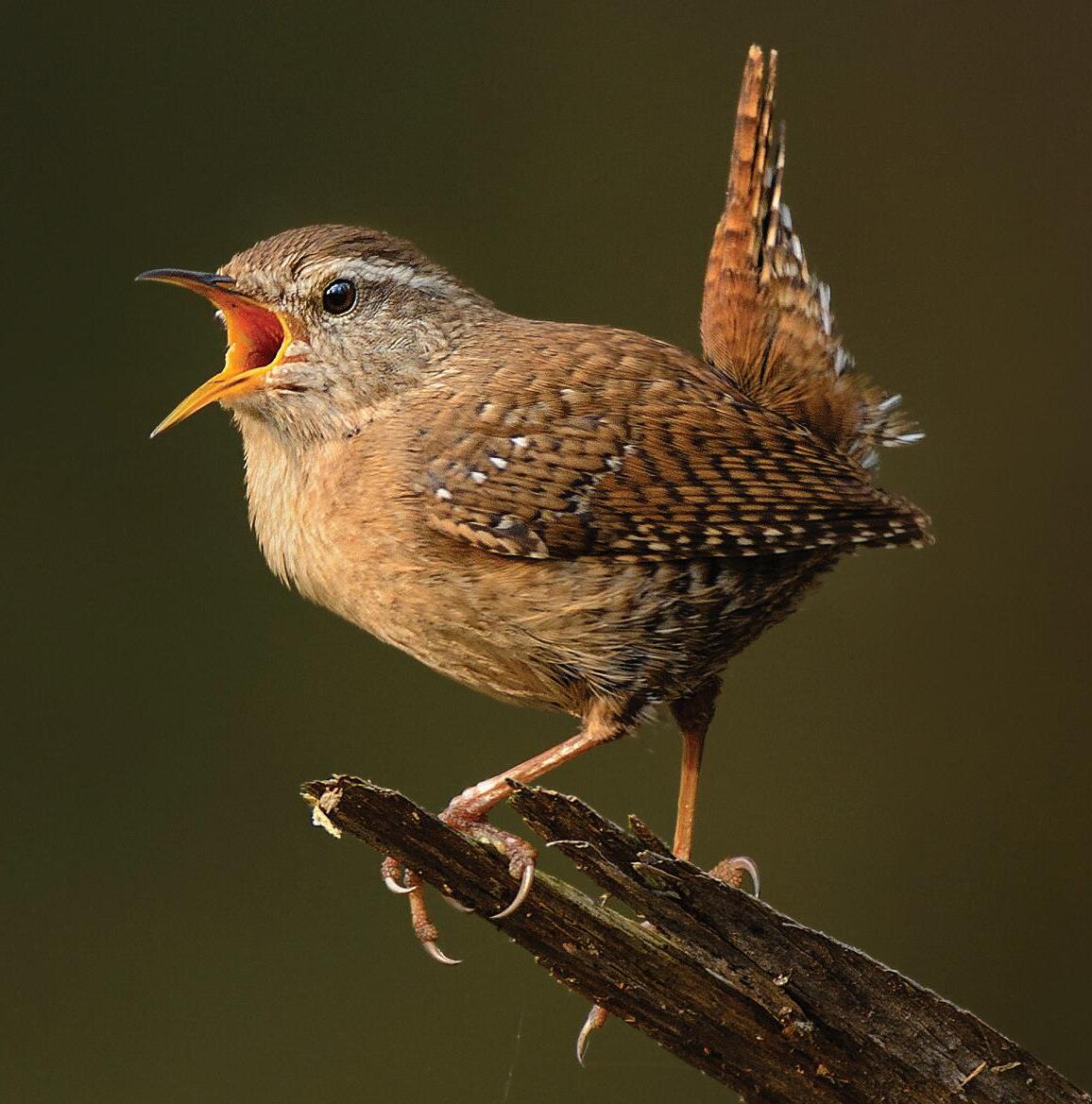

Clockwise from top left: ring-necked parakeets, a wren, a European beeeater and a robin. What’s in your local park or garden?

sessions or ‘Guide in a Hide’ open days. Many sites will rent you a pair of binoculars for a nominal fee.
My own local nature reserve is Rye Harbour in East Sussex, where the visitor centre has a cafe with huge windows so you can watch for marsh harriers while enjoying the excellent carrot cake. Rye Harbour is an amazingly diverse area of salt and freshwater pools, shingle, woods, scrubland and open fields (as well as a Tudor castle), but you don’t need to go somewhere special – at least a dozen species are regular visitors to my ordinary small-town garden.
Technology has also made a huge leap, of course. Tools like the free Merlin smartphone app, developed by Cornell University in the US, use artificial intelligence to analyse birdsong and tell you what you’re hearing. If you want to photograph birds, good camera lenses are much more affordable now.

Alongside that, the hobby is becoming more diverse, with groups such as Flock Together and podcasts like Get Birding trying to create more space for birders of colour. Flock Together’s London-based founders, Ollie Olanipekun and Nadeem Perera, met on Instagram in 2020 when Perera responded to bird photos posted by Olanipekun. Their group aims to help more people of colour feel comfortable in a new hobby. Its scope has moved beyond organising nature walks in the UK, with satellite groups springing up in Tokyo, Toronto and New York.
Birds are all out in their best and brightest plumage, singing their heads off
such as sparrowhawks and great spotted woodpeckers from the unpromising vantage point of the number 19 bus.
In fact, naturalist David Lindo, known as the Urban Birder, reckons he sees more warblers at Wormwood Scrubs during the spring and autumn migrations than his birding friends in Norfolk, where the wildlife has more space. The London Wetland Centre at Barnes fills up with sand martins, wheatears and wagtails in the spring – and it’s worth remembering that CSSC members get discounted entry to all Wildfowl and Wetlands Trust sites.
If you can’t get excited about sparrows and robins, rewilding and reintroductions have restored raptor populations. Our largest bird of prey, the white-tailed eagle, is often described by birdwatchers as a ‘flying barn door’. Six pairs reintroduced to the Isle of Wight in 2019 have bred successfully, and their young have started to spread into England.
Red kites are back too; 13 were flown in from Spain and reintroduced in the Chilterns in 1990, and the huge birds with their distinctive forked tails are now a regular sight in our skies. If you want to head for Scotland to look for golden eagles, CSSC members get free entry to National Trust for Scotland sites with our corporate cards.
It’s not just a country pursuit either. Urban birding can turn up some surprising sights too, which are all the more exciting for having been spotted in such unpromising surroundings. London’s most obvious birds are bright-green ring-necked parakeets, but the city has around 30 pairs of peregrine falcons which nest on high buildings like Tate Modern and the Houses of Parliament, swooping down to catch pigeons. On a recent walk across Hampstead Heath on a busy Saturday I heard two buzzards calling to each other as they circled overhead. And once again, you don’t need to go anywhere special: the actor Samuel West, a keen birder, has recorded sightings
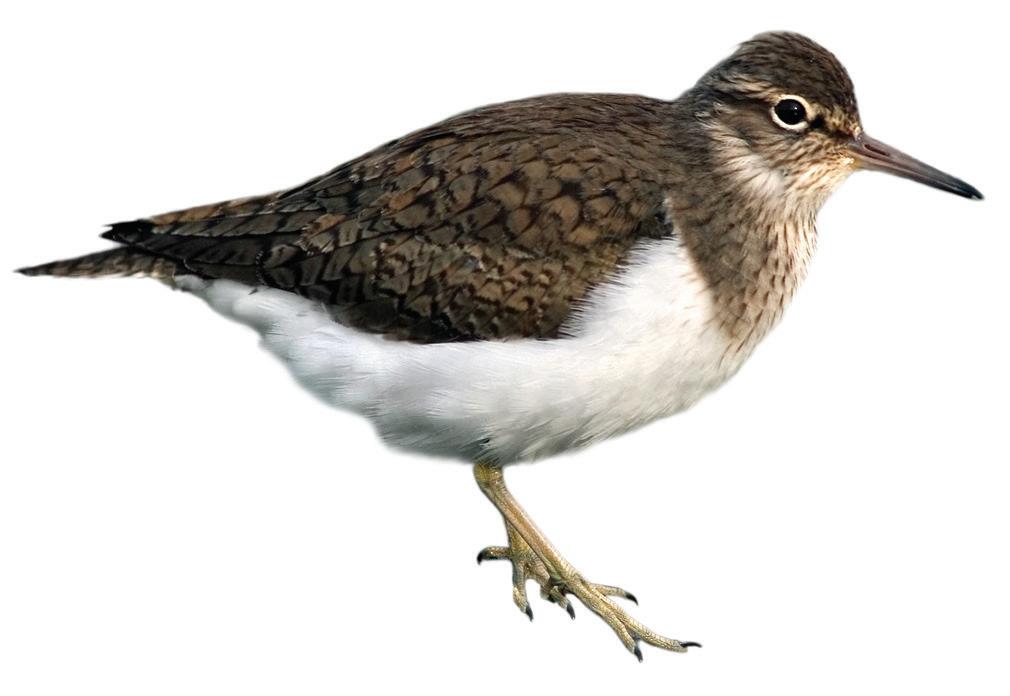
Sitting in a hide looking carefully to see what you can identify is a marvellous mindfulness exercise, and slowing down to watch birds come and go, feeding their young or squabbling over territory is hugely entertaining. Plenty of studies have highlighted the benefits of spending time in nature for mental wellbeing, and some focus specifically on birding: research from the Institute of Psychiatry, Psychology & Neuroscience at King’s College London in 2022 found that seeing or hearing birds is associated with an improvement in mental wellbeing that can last up to eight hours. The improvement was also evident in people with depression, indicating the potential role of birdlife in alleviating mental health conditions. This spring, migrants from the south will be making extraordinary journeys over thousands of miles to our shores, while birds that spend winter in our relatively mild climate will be heading north to breed. All you need to do is head for your local park or nature reserve and really look, really listen, and discover what you can see and hear. And then it’s off to the cafe for a well-earned slice of cake!
If you’d be interested in starting a CSSC birdwatching community or perhaps organising walks, talks or trips to ornithological hot spots, get in touch with us at editor@cssc.co.uk
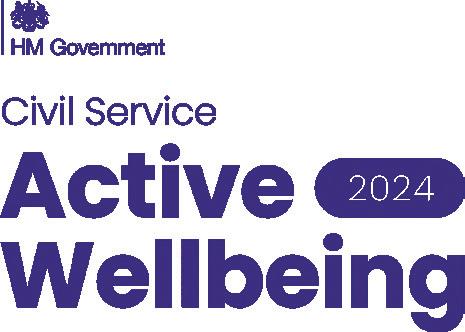

Throughout February, CSSC, in partnership with the Government People Group, hosted our sixth annual Active Wellbeing initiative to help everyone in the civil service and public sector increase their physical movement and become more active. We’ve always been proud of our Active Wellbeing events and AW24 has been an incredible success, helping thousands of colleagues to gain confidence, find new sports and activities and grow their communities and networks.
We took a look back at the month-long initiative and spoke to the team behind AW24 to find out what it takes to put something like this together.
Building on the phenomenal success of last year’s around-the-world step challenge, this year AW24 looked to increase its reach and broaden its appeal to encompass even more colleagues. Its primary focus this year was to encourage those of us who are less inclined to stay active, while removing the many physical and emotional barriers that can prevent us from getting active.

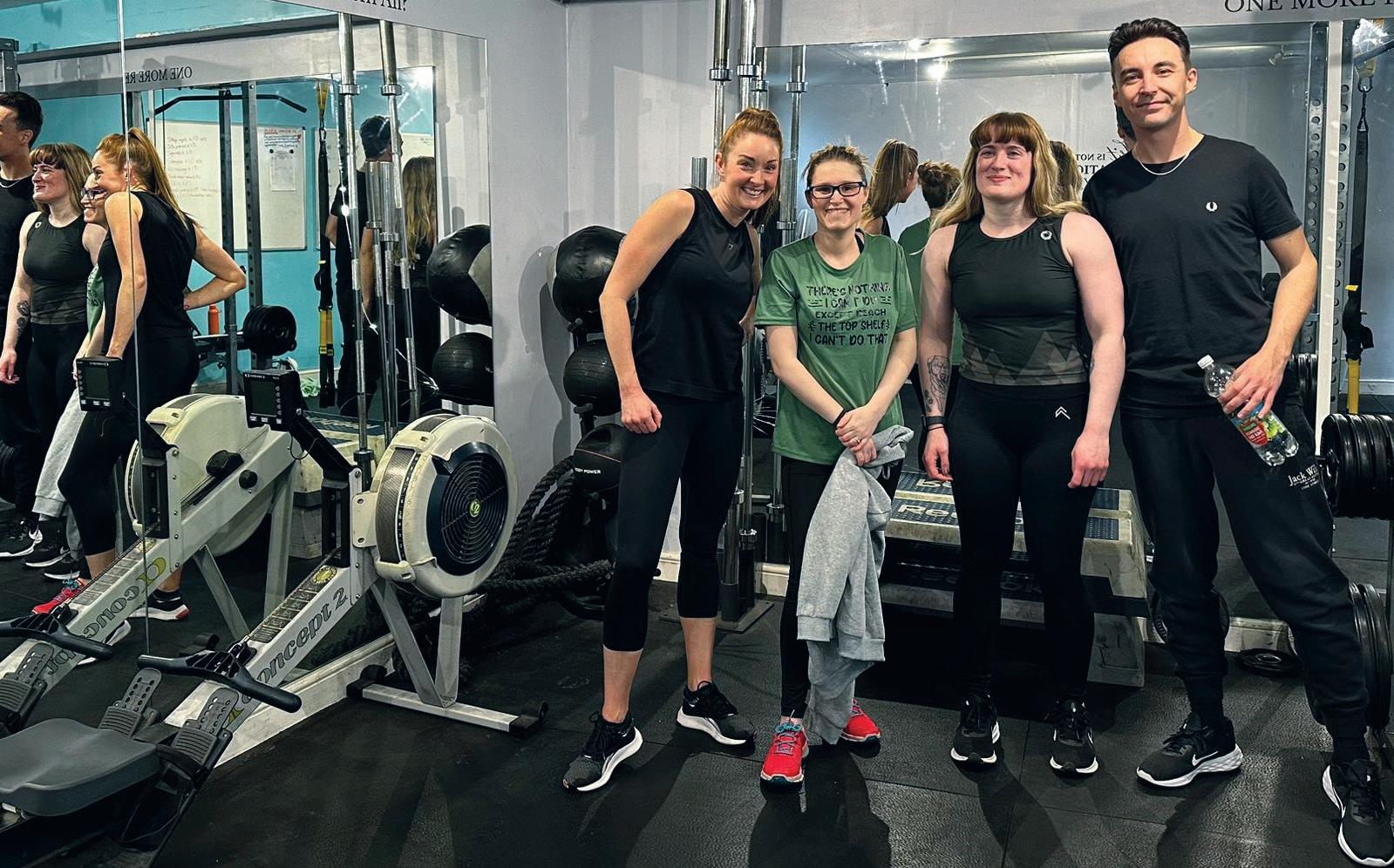

In the lead-up to the start of AW24 we encouraged the whole of the civil service and public sector to sign up and join a team. We felt that having teams would encourage a lot of people who might not otherwise get involved. Attempting something new on your own can be overwhelmingly nerve-wracking! We hoped that the prospect of participating with teammates whom they already knew and worked alongside in daily life would help overcome that. And team sports offer a lot of support and camaraderie, which helps everyone further (and builds up new friendships too).
Another barrier we hoped to hurdle with AW24 was the lack of time and opportunity that many people tell us prevents them getting active. They’re so busy with their lives – work, children, other caring responsibilities and so on – that they simply can’t


invest in their own wellbeing. So the team behind AW24 was keen to provide the time, techniques, opportunities and equipment that can help with this. AW24 was packed full of resources, tools, classes and ideas for trying new ways to get active. And these were specifically designed to fit around busy lives, like lunchtime walks, badminton games, yoga classes and 10-minute workouts that don’t need a gym or fancy equipment.
In order to fully understand those barriers and comprehensively navigate the hurdles, we worked in partnership with a number of different workplace associations (WAs), the sports and social groups that operate in departments and workplaces. As well as sharing their extensive experience, the WAs helped facilitate active events designed to engage, excite and entertain their members and colleagues.
The associations know their members incredibly well, which means they are perfectly placed to understand what drives and motivates their colleagues. Throughout 2023, with support from CSSC, they hosted sports days and activity events as a way to foster healthy, active lifestyles through friendly, yet competitive and spirited, competition. These sports days proved increasingly popular and the perfect energiser to foster interdepartmental collaboration and networking.


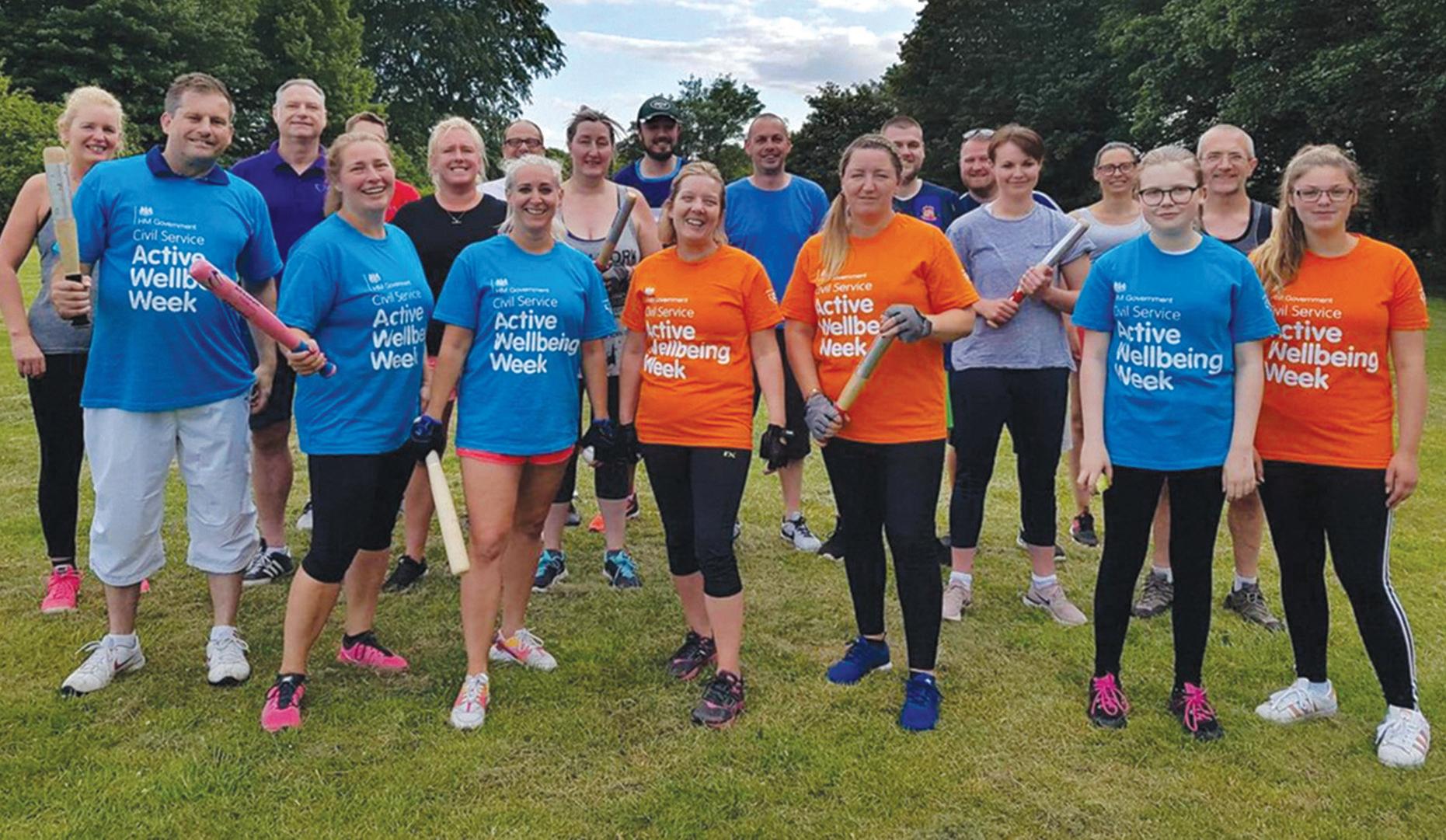
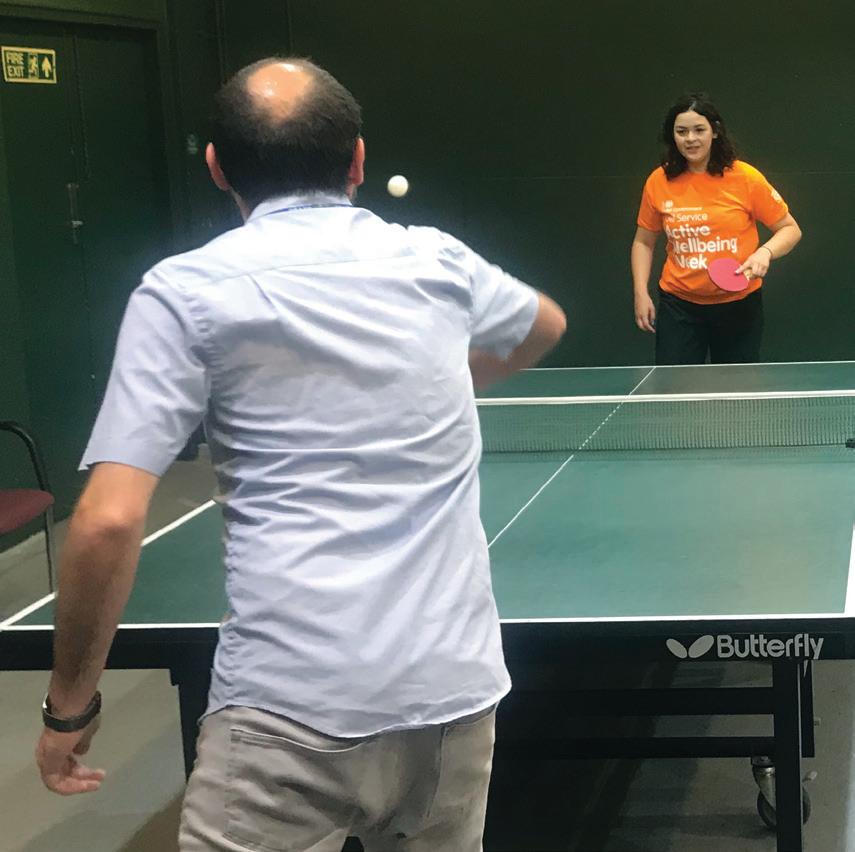
Feedback from the record number of participants has been overwhelmingly positive, with many already planning next year’s challenge. The benefits reported include:
l improved physical and mental wellbeing;
l a great sense of achievement;
l feeling part of a team supporting each other;
l taking time for oneself;
l creating new healthy long-term habits;
l increased confidence;
l feeling energised;
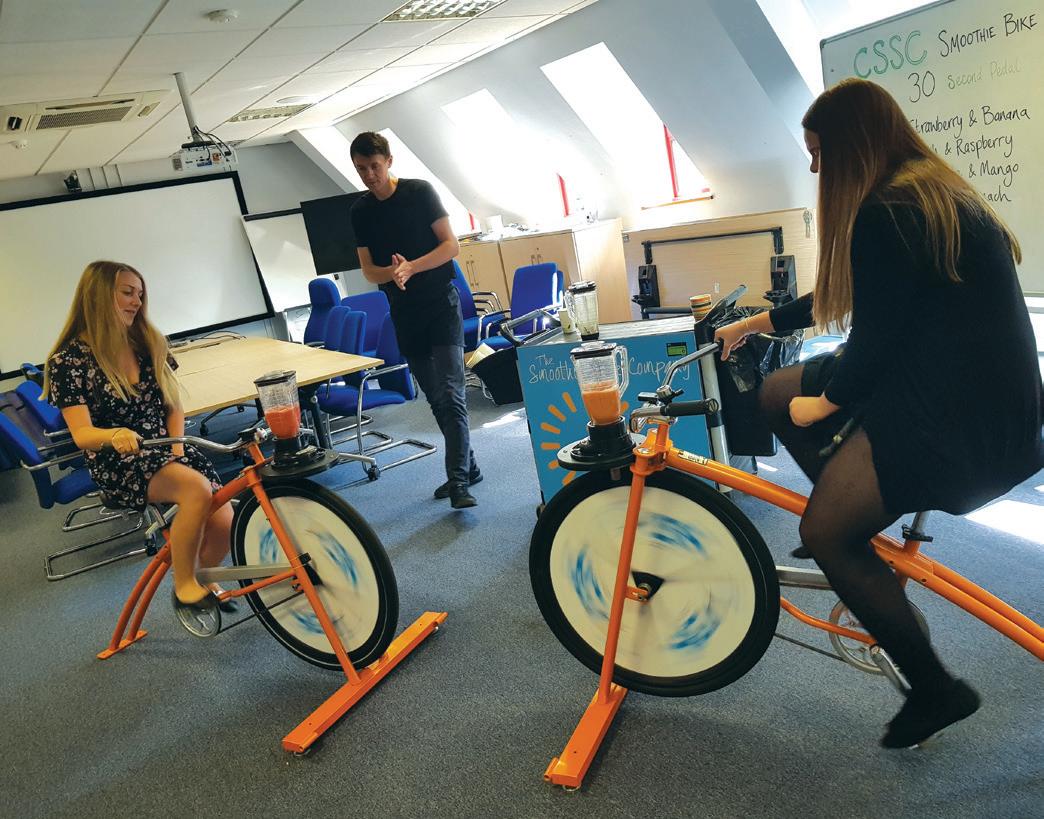
AW24 was packed full of resources, tools, classes and ideas for trying new sports
l breaking down barriers around getting involved;
l opportunities for trying new things.
Loads of you got in touch to say how much you enjoyed taking part in this year’s Active Wellbeing challenge, sharing your photos with us and on social media too.
Lunchtime walks seemed to be the most popular activity, being great for getting people out and about and socialising together at a suitable time which didn’t eat into personal lives and other responsibilities.
Also popular were yoga and Pilates classes, five-a-side footy tournaments, rounders and netball games, as well as litter picks, skipping and – yes –even housework (two benefits in one)!
Congratulations to everyone who took part in CSSC’s Active Wellbeing around-the-world challenge. You helped make this our most successful, most engaged with and most inclusive campaign ever. Nearly 14,000 people took part, across 100 departments, from over 20 regions around the country.
Don’t worry if you missed this year’s Active Wellbeing. We’ll be back again next year with even more fantastic activities.
And if you’ve been inspired to start your active journey, to try something new or to simply connect with colleagues across the civil service and public sector, why not explore CSSC further? There are thousands of opportunities to get active, try new sports, save on health and fitness, and meet likeminded colleagues.
If you’re passionate about helping to motivate and inspire your colleagues with sports, games, activities and challenges, why not get in touch and help us to launch Active Wellbeing for the best start to the new year. You can email activewellbeing@cssc.co.uk to register your interest and be one of the first to hear what’s coming up.

If you want more than your local leisure centre pool, but wild swimming isn’t the answer either, what about a lido? ByAdrian Monti
On a stiflingly hot summer day, it’s hard to imagine a better place to head to than a lido.
Although they’re often found close to beaches, there are also plenty of these idyllic oases tucked away in our landlocked towns and cities. Not only do they offer the perfect spot for some al fresco swimming (some are open all year round), but they are also a perfect place to cool off as
temperatures soar. And with their inviting sun terraces and shaded cafe areas, they offer a relaxing space to hang out and simply watch the world go by.
Many exude a distinctly exotic vibe, and perhaps that’s not surprising. The word ‘lido’ itself comes from the name of a popular Venetian seaside resort,

which in turn was derived from Italian and Latin words for shore. Lidos became particularly fashionable here during the 1930s and soon began popping up all over the country, reaching a highwater mark of 300 in the years either side of the Second World War. However, that number slowly ebbed away, with only around 130 public lidos or outdoor pools in existence today.

Tinside Lido, Plymouth, Devon (left)
Built during the peak of the lido boom in 1935, its eye-catching Art Deco design makes this one of the best examples in the whole of Europe. Nestling just below Plymouth Hoe, the semicircular pool is poised elegantly beside the sea. Blue striped tiling, sun decks and a retro feel mean it’s enjoyed a renaissance since it reopened almost 20 years ago.
Hathersage Swimming Pool, Derbyshire
A local philanthropist gifted this outdoor pool to the village in 1936, and despite some financial ups and downs in the intervening decades, it’s remained a cornerstone of community life. Surrounded by the stunning hills of the Peak District, it’s open all year thanks to the fact that the water is kept at a very pleasant 27C.
Gourock Pool, Inverclyde, Scotland
This heated saltwater pool has been extensively refurbished since 2010, but still retains much of the charm from when it opened back in 1909. As you
plough up and down its lanes, you can enjoy views of the Clyde estuary, while during the summer, it stages regular sessions under the stars. In 2023 the lido even appeared on the cover of Blur’s album The Ballad of Darren Lido Ponty, Pontypridd, South Wales
At its height, there were said to be more than 57 outdoor pools dotted across Wales. But today this facility – also known as the National Lido of Wales – is the only one in regular use. It opened in 1927 after local miners paid some of their wages to fund it. A major refurbishment meant that in 2015 the Grade II listed lido gained a new lease of life.
Tooting Bec Lido, South London (above)
Not only is this the largest freshwater swimming pool in England, but it also enjoys a sense of seclusion as it’s surrounded by trees, while the brightly painted changing room doors on the poolside give it a cheery air. With origins dating back to 1906, this lido has now been extensively restored.
“In the 1930s and post war, a public works programme to create jobs and promote health meant there was a boom in lido building,” says Michael Wood, an assistant professor in sport management at Northumbria University. “The lido was a place to socialise and have fun.”
However, Michael explains, spending priorities shifted in the later decades. “In the 1960s, local authorities only funded indoor pools, which meant that leisure centres were built instead. As a result, for many years there was a managed decline of lidos, and a lot fell into disrepair or were filled in. It wasn’t that the public did not want lidos, but their financial upkeep became an issue.” Sadly, this means that some of our once popular lidos – such as those at Blackpool and Hastings – have now been lost forever.
But this isn’t the end of the story. In the 21st century, lidos have enjoyed a renaissance. There’s a fresh interest in all forms of outdoor swimming, along with a strong desire to save these historic treasures on our doorstep. In many places, local communities or other bodies have launched campaigns to fight for the survival of these attractions and revive them for future generations.
“The future seems more positive,” says Michael, who has been helping to save his own local lido at Tynemouth. “These inclusive spaces, which are all about enjoyment, can hopefully blossom once again.”
l To find out about learning to swim as an adult, visit Swim England’s website. l There are loads of ways that CSSC can help you get back into swimming, improve your form or even train to compete internationally. Type in ‘swimming’ on the CSSC website or search under Sports & Leisure.

Vicki’s story
And if you can’t swim at all, it’s never too late to learn…as Vicki Markham, 54, from Felixstowe, Suffolk, explains.
“The first time I ever remember being in a swimming pool was when I was a pupil at my junior school. But during one school swimming lesson, I had a terrifying experience. That put me off swimming for the next 40 years.
“Then four years ago, I started doing aqua aerobics. Because I have severe arthritis in my knees, my GP and physiotherapist thought aqua or swimming might help me do some regular exercise without any pain. As I couldn’t swim, I decided to try aqua. At my first session I went with a friend and held on to the side to do the moves. It took me two weeks before I felt brave enough to let go and stand in the shallow end, but doing those classes gave me the courage to sign up for swimming lessons at my pool in September 2021.
“The first time I went along it was very daunting. However, our coach was brilliant. At first, he just got us to put our faces under water and blow bubbles to
get over any fears of the water. I began to really enjoy those lessons every Wednesday evening and my confidence slowly grew. After a while, at each weekly session my coach asked if I was ready to stop using my float. I would always say not yet, but one week I did throw it away and it felt amazing. It took me over a year to learn to swim but I’m so glad I did it. And when I told my parents I could swim they were so chuffed for me.
“I’m still a bit nervous going into deeper water and want to improve my backstroke. But my goal is to do a charity swim in the pool, which will keep me motivated. I have also met some great friends through it who I still see out of our class. That new social side and what it have done for my mental health – I was aware I was becoming quite isolated before – has been brilliant too. I now help with the new beginners as a friendly face when they’re starting.
“I’m proud I’ve finally achieved it. In many ways I wish I had learnt to swim years ago. I now can’t get enough of it and I would go swimming every day if I could.”
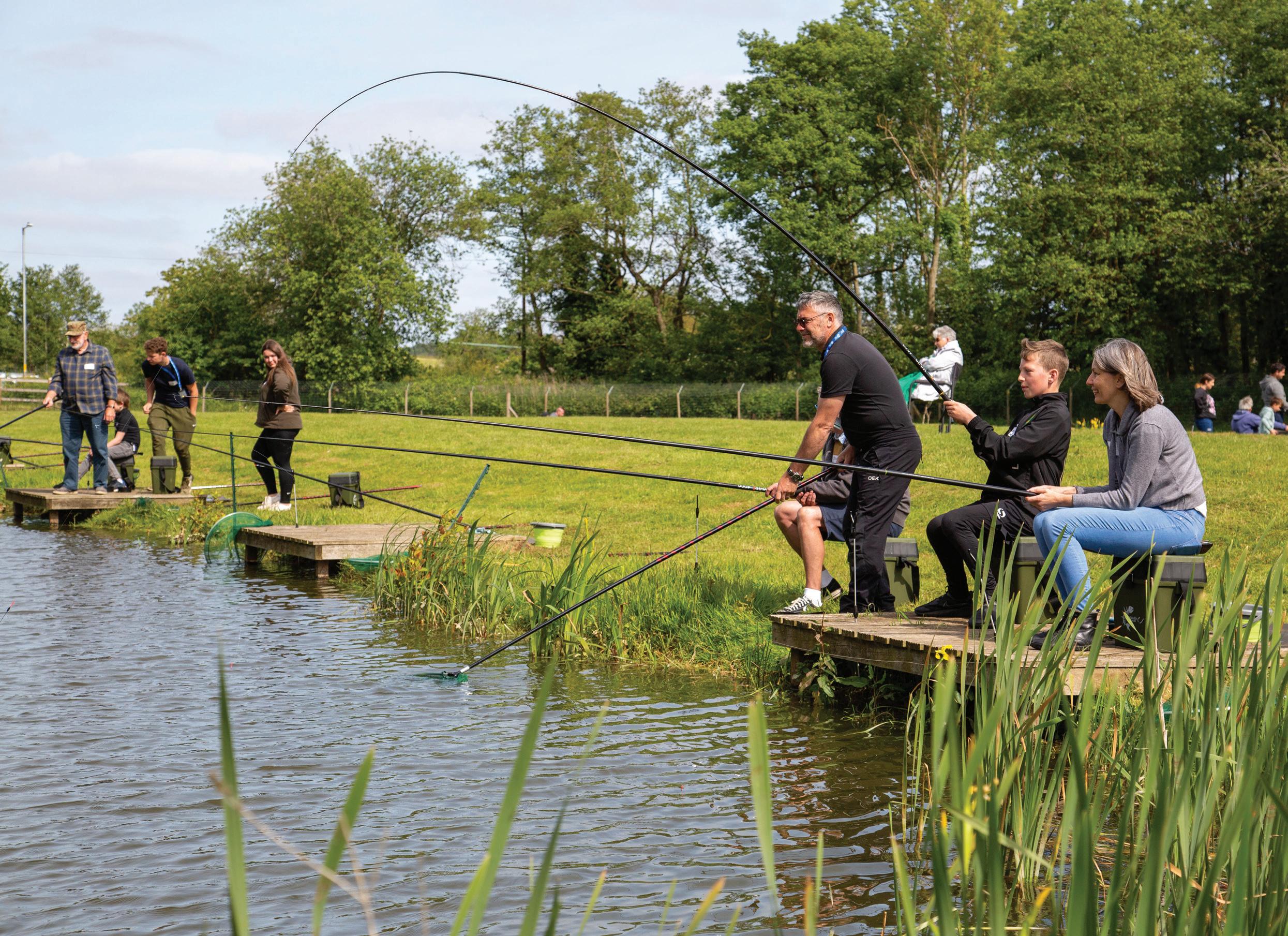
We’re excited to announce our new partnership with the Angling Trust, the national governing body in England representing fishing – one of the country’s largest participation sports. The Angling Trust is a not-for-profit organisation that protects fish, fishing and the environment and is dedicated to creating opportunities to experience
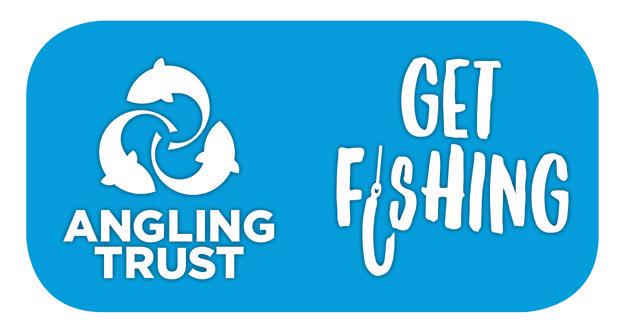


fishing in a healthy aquatic world. The partnership will initially focus on its Get Fishing participation programme, which has introduced thousands of newcomers to the wonderful world of fishing.
If you or a family member have ever wondered what fishing is all about (or had your interest piqued by Mortimer and Whitehouse), Get Fishing offers the perfect opportunity to find out more. The Get Fishing team will be arranging special have-a-go fishing events for CSSC members in spring 2024. At these free sessions everything you need to catch a fish – including a complimentary one-day fishing licence from the Environment Agency – will be provided to use on the day, as well as a Level 2 Licensed Angling Coach so that you’ll leave confident about what to use, how to use it and where to go fishing next time!
Clive Copeland, Head of Participation at the Angling Trust, told us: “It’s a privilege for the Get Fishing team to provide these events and for communities to experience the proven health and wellbeing benefits of spending time next to water.
“As well as peace and relaxation, CSSC members will get to see everything that goes on above, next to and under the surface of our beautiful springtime fisheries, with expert advice on hand and nextsteps info on local angling opportunities.”
Fancy testing the water?
Get Fishing can help you get started
l The Get Fishing campaign –funded by the Environment Agency and Sport England – has a track record of helping people from diverse backgrounds take the first step on their angling journey.
l Look out for details of events for CSSC members in spring and summer 2024.

A trip to the zoo could be just what you need and your family need…and thanks to a new CSSC partnership, it’s affordable too. By
Richard Hemley
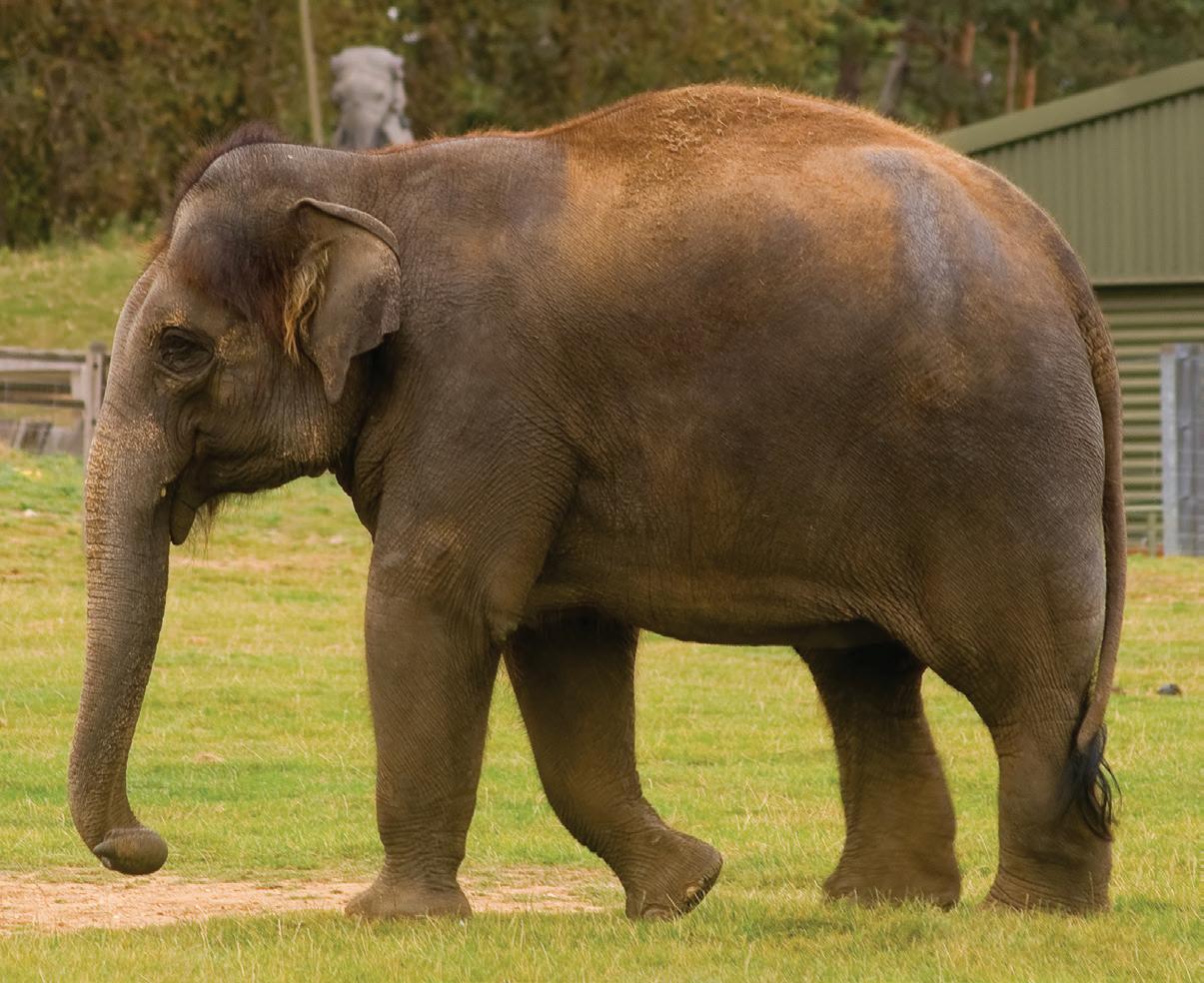
Last year CSSC was extremely proud to introduce our newest partner, ZSL (Zoological Society of London), an international conservation charity, along with its two conservations zoos, London and Whipsnade. As well as providing another fantastic offer for our members, this cemented our relationship with a globally recognised brand, whose values aligned with our core beliefs of only working with sustainable partners and ethical brands.
And as a long-time member and frequent visitor to Whipsnade Zoo, I couldn’t wait to tell anyone who’d listen my tales of the great times we’ve had there as a family. Both my wife and I have been members for over 10 years, renewing our membership every spring to catch the new births and new arrivals. But in fact it wasn’t the baby animals which first prompted our interest; it was the birth of our own little monkey.
Like most first-time parents, sleep was elusive. It was the one thing we craved and yet the one thing we were denied. In the early days the only thing that got Izzy to sleep was the white noise of a vacuum
cleaner. After burning out not one but two vacuums, we hastily looked for an alternative sleep aid before acquiring our third one and quite possibly considering buying shares in the company too.
Driving around worked well, but it wasn’t a long-term or environmental solution, so walking the pram around town was our go-to quick win. But anyone who has ever tried this approach in a busy market town may attest

to our chagrin at noisy passing cars, lorries and people; bumpy pavements; and hilly streets. So, where to go?
The answer, we found, had been right on our doorstep for over 80 years: the larger sister to London Zoo, Whipsnade Zoo. With its 600 acres of the Dunstable Downs, and miles of smooth roads and pathways, it provided the perfect tranquil setting for our aimless wanderings. It was a great place for peace and quiet, but also a safe, stimulating learning experience for us poor sleepdeprived parents.

As Izzy got older and slept better, she started taking note of her surroundings, and instantly loved the new and interesting sights, sounds and smells of the zoo. It brought to life the cartoon animals she cuddled at night and had become accustomed to on TV. It also gave a fresh perspective on farm animals. We renewed our annual membership year by year, and our experiences expanded. We started using the free soft play and playground areas and took picnics throughout the summer and flew kites on the Downs. We stayed overnight in the glamping Lookout lodges, and we watched the bird displays and animal feeding times. We swapped

the pushchair for scooters and explored more of the zoo. We visited London Zoo as part of the same membership and fed the lions during the Keeper for a Day experience. We brought homework to life with drawings, stories and facts about habitats and conservation.
And as we grew, we witnessed the zoo grow around us as well. The expanded aquatic centre and toasty-warm butterfly house are a welcome respite during the colder months, and the restaurants have matured to cater for more needs and tastes. We’ve even seen baby animals grow and become parents themselves, reminding us of our own journey. Over the last decade it’s truly felt like a second home to us, and we owe it a debt of gratitude. It’s helped raise our baby girl into a curious, lively, inquisitive and knowledgeable young being. It’s been an everpresent and always open permanent fixture in our weekend itinerary. It’s provided some fantastic memories of Santa visits, dinosaur exhibits, and TV personalities, and it’s paid for itself 10 times over with great value, screen-free family time and carefree days out. And we have felt rewarded by helping an exceptional charity
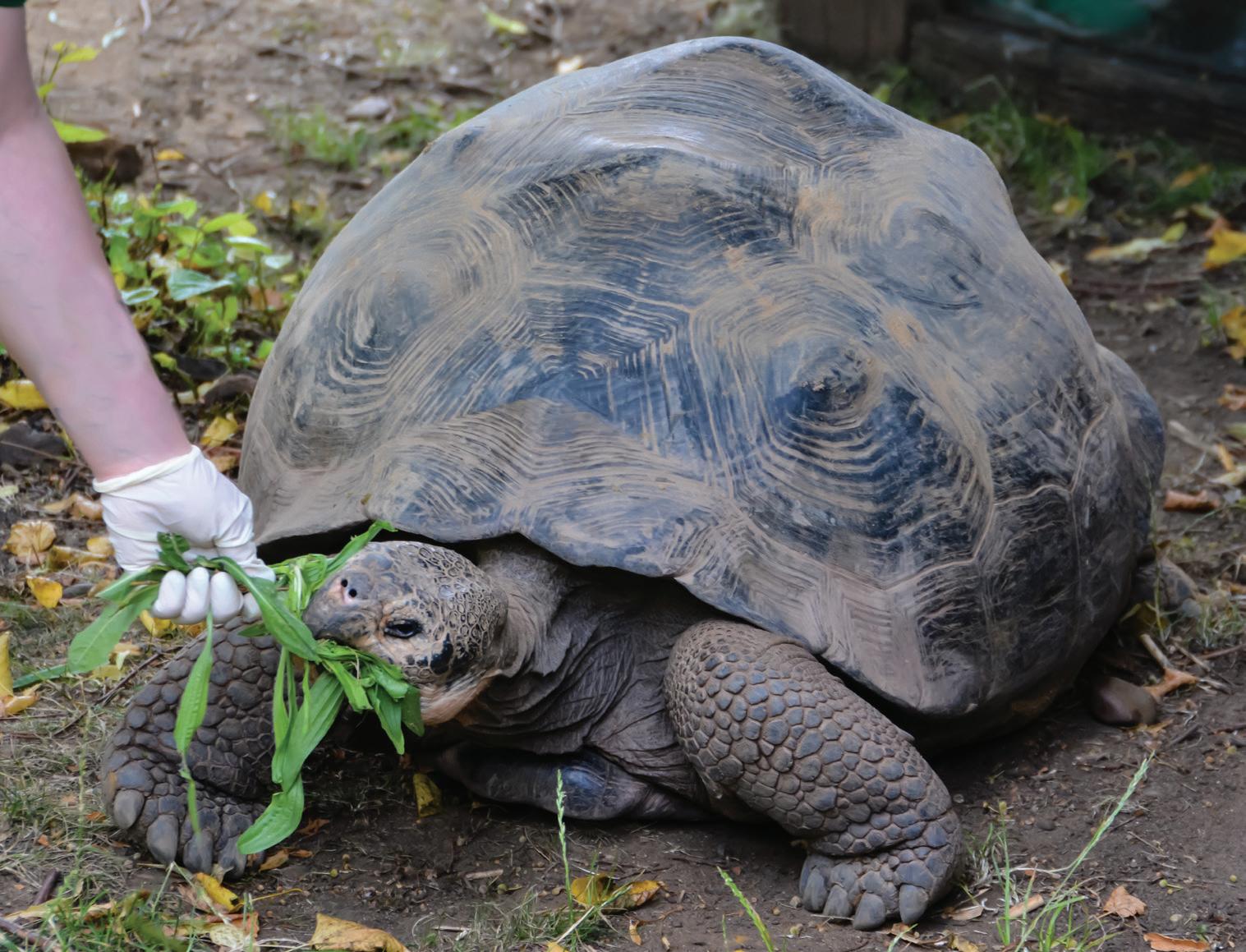
l New for summer 2024 –Monkey Forest
l The butterfly enclosure
l African train ride
l Soft play and playground
l Hands-on farm animals
l Bird show and animal talks
l Overnight stays at Lookout Lodge
l New for 2024 – The Secret life of Reptiles and Amphibians
l Play area and splash zone
l Zookeeper for a Day experience
l Gorillas and Sumatran tigers
l Christmas and Halloween themes
l Monkey Valley and Penguin Beach

l Giants of the Galápagos
to look after endangered animals and restore threatened habitats around the world.
Now Izzy has turned 10 and is more curious about the digital world than the living world around her, I suspect we have come full circle and will retain our membership more for our own wellbeing and to help ZSL with its essential work. Perhaps it’s a poignant metaphor that the countless circular laps of Whipsnade’s outer ring road, which sustained us so well in the early years, now provide us with a stunning walk to help us stay active and engaged. And they remind me that the circle of life is ever present and worth nurturing and protecting for future generations.
CSSC members can save 10% on online tickets and gift shops at ZSL conservation zoos. Get your tickets for London and Whipsnade zoos, and explore all our wildlife, safari, zoological and aquatic partners at cssc.co.uk/zoo.




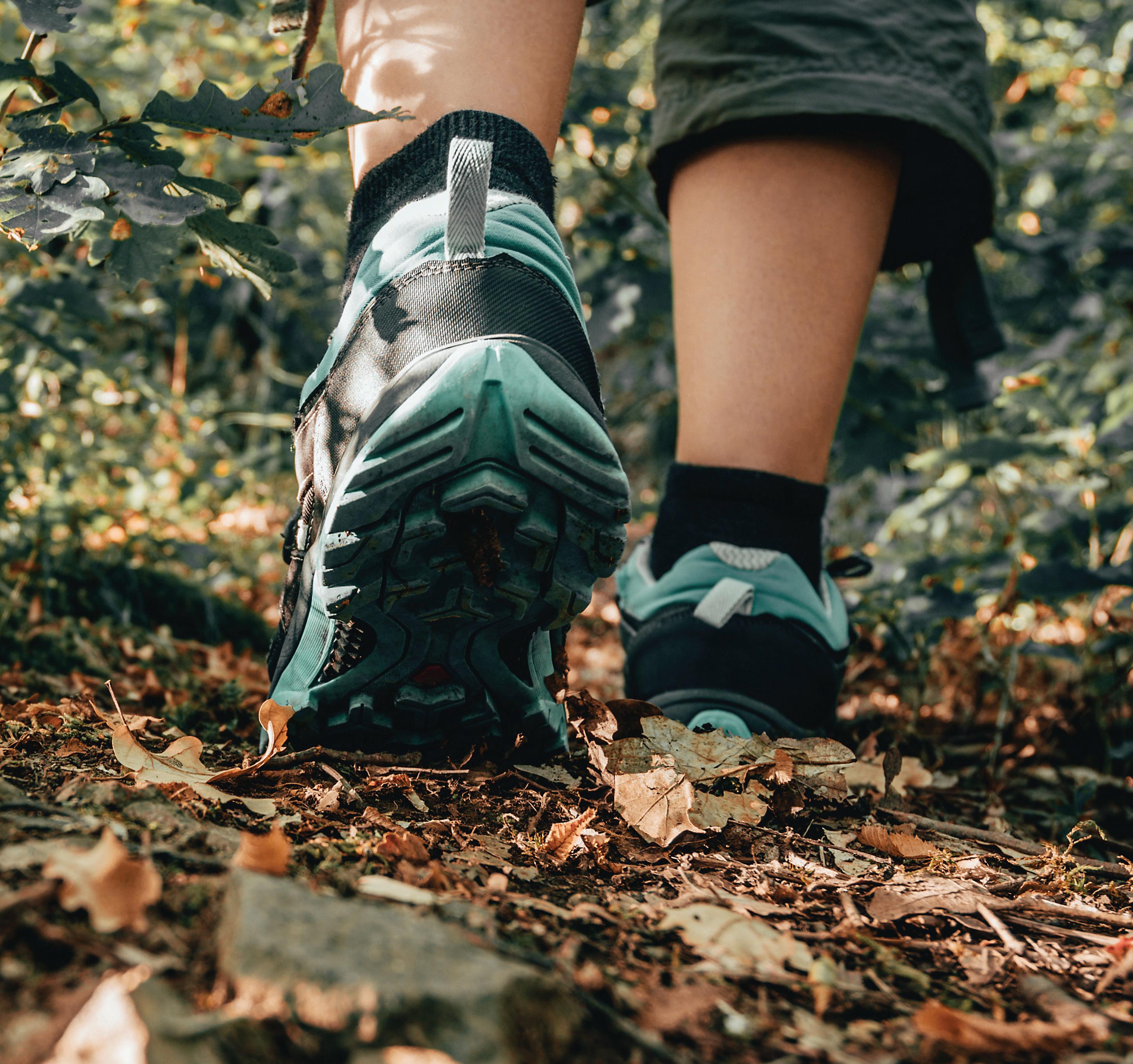
What’s so great about walking? Well, it’s low-impact, needs little equipment, is free to do and makes you feel great. What’s not to love?
Some days, it feels as if you can’t open a website, social media channel or magazine without finding a feature on some great, revolutionary new way to get fit, stay in shape, lose some weight and be a better version of yourself. As we all know, however, throwing yourself into a new and untested way of dieting or exercising is often setting yourself up for failure, as you’ll either not go to all those classes you’ve booked; give in to temptation and stay away from the new ‘it’ diet; or generally fall at the first hurdle (possibly literally) when it comes to your new exercise regime. The answer might be at your feet…walking.
One of the glorious things about walking is that you can just leave your front door and you’re off – but those old canvas plimsolls or a pair of office shoes just won’t cut it if you’re going to walk any distance. In fact, taking care of your feet is very important when you are increasing the amount that you
By Sally J. Hallwalk. And while you don’t have to spend a fortune, spending a decent amount does pay off – in exercise shoes, you really do get what you pay for. For trainers or walking boots you should look for:
l a supportive, cushioned insole and a supported arch if you have high arches;
l a good tread pattern on the sole to prevent slipping;
l a sole profile that prevents you from turning your foot inwards (overpronation) or outwards (underpronation) as you walk – which most of us do; to check this, you can either be assessed in a running-shoe shop or just check the wear patterns on an old pair of your shoes.
Consider the type of environment you’re walking in:
l if it’s in grass, on trails or in the forests, make sure your footwear is waterproof;
l if it’s mainly pavements and parks, ventilated shoes may be more comfortable as they are breathable;
l for climbing or very rough terrain, boots are

Make sure you are walking well too. Osteopath Eva Gorska BSc, who treats patients in North London, says: “Poor walking posture can put strain on muscles and bones. Stand up tall, as if someone is pulling your hair from the top of your crown, allow your shoulders to drop, let your arms swing freely and pull in your belly button. Try to avoid hunching over, and keep your eyes up to look out for obstacles so that you don’t trip!
“Don’t overstride, and maintain a pace that you are comfortable with. If you want to go faster, keep
the same length of stride but increase your steps per minute. You are aiming for a smooth pace, making sure you plant your heel down first, and then roll from heel to toe. If you are planning on doing longer hikes on uneven ground which includes steep descents, walking poles can be a great knee saver.”
more appropriate than trainers, as they offer more ankle support;
l if you are going to walk to work and then change your shoes, walking trainers are lighter to carry once you’ve swapped over.
If you want to make your walking workout more effective, you can add some pieces of kit to your gear to help you burn additional energy and tone more muscles. Ankle and wrist weights are easy to find, though be wary: they can put a strain on your joints and cause you to use the wrong muscles.
On the other hand, they’re ideal if you are doing targeted exercises such as leg and arm lifts, so perhaps you could pop them in a backpack so you can do some additional exercises when you stop for a breather. You can even buy a weighted vest – though a small backpack with a bottle of water, a flask of tea and some energy snacks can do the same job! Aim for one that’s around 10% of your body weight. It helps put pressure on your bones and stimulates bone cell production.
If you’d rather walk in company, look for organisations like the Ramblers, or local CSSC groups near you. You might even decide to go on a walking trip or holiday with your new friends.
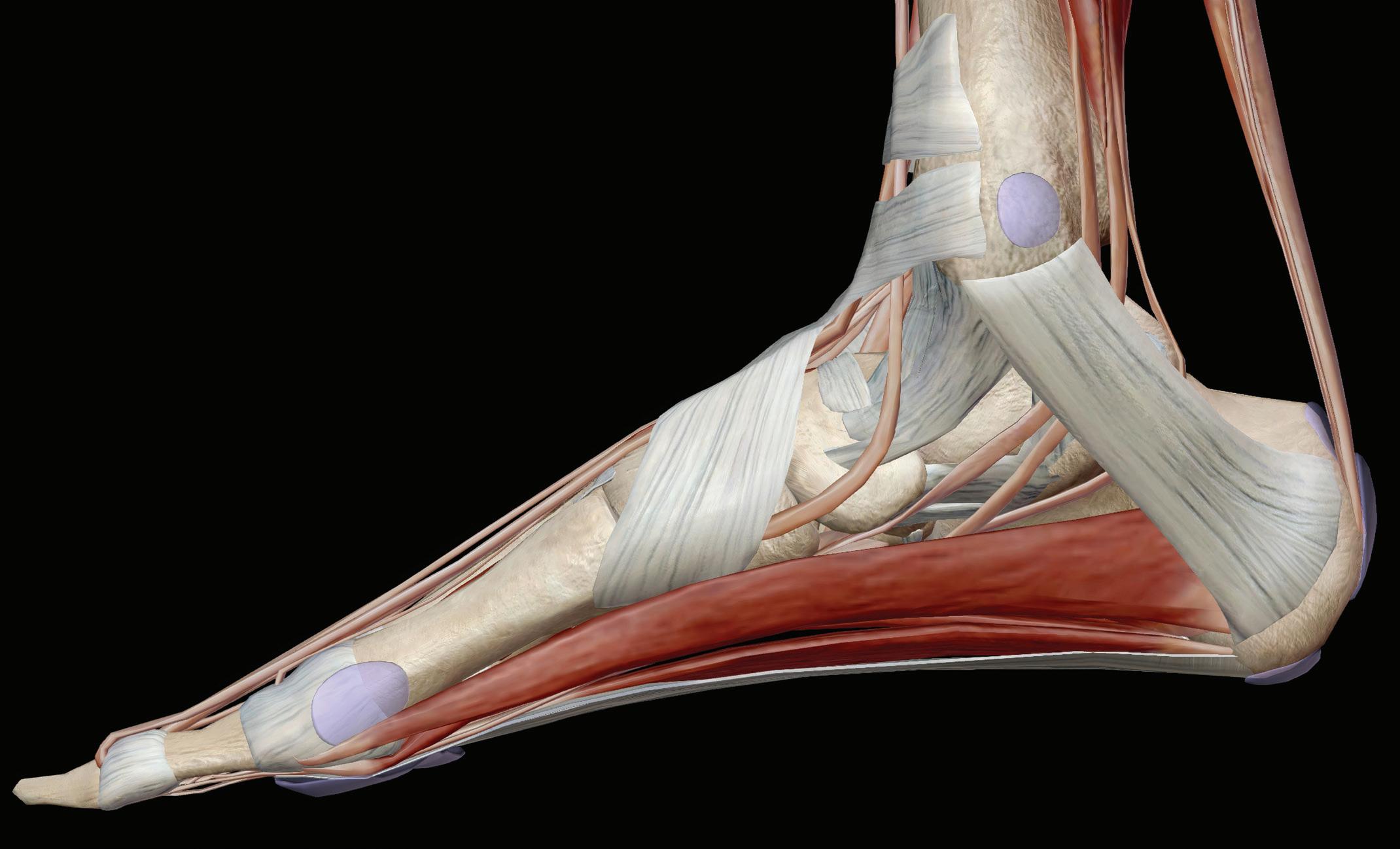

Take part in a tradition dating back over more than a thousand years
Famous routes like the Camino de Santiago de Compostela in northern Spain have their equivalents in the UK, and in both countries people walk the pilgrim trails. Some do it as a form of religious pilgrimage; some as a way of closing one chapter of life before moving on to another; some walk for pleasure; and some for exercise. (Or a mix!) Whatever your reason, one of the most famous routes winds through some of southern England’s most beautiful countryside.
From as early as AD 1172, Christians have walked the 153 miles between cathedral cities Winchester and Canterbury. The Pilgrims’ Way, as it as known today, lies along an ancient ridge of the North Downs, which would have offered a dry, accessible route for people for millennia, with good views of the landscape and the path ahead.
Cathedral to cathedral
Your route starts in Winchester, with its magnificent cathedral built between 1079 and 1532 and holding the record of the longest medieval cathedral in the world. It boasts many historical artefacts, being the burial place of St Swithun (AD 852 to 863), several of the ancient kings of Wessex, and author Jane Austen. It’s also home to the 12th-century Tournai font; a collection of rare books known as the Morley Library; and the Winchester Bible, an illustrated book that is the largest surviving 12th-century English bible. Take a good look around before requesting Wayfarer’s Dole (a cup of beer and morsel of bread) at the Hospital of St Cross (one of England’s oldest surviving almshouses), then receive a formal sending off at the shrine of St Swithun before heading off on your route.
You’ll pass some interesting places along the way. Farnham Castle combines a red-brick bishop’s palace with an earlier Norman keep. Near Guildford there is the quaint village of Compton,
where the Watts Gallery houses a collection by Victorian artists. From Guildford Castle, you can follow the River Wey to Shalford and then follow on to the Saxon church at beautiful Albury Park, on the banks of the River Tillingbourne.
At Hackhurst Downs you’ll find some World War II pillboxes and you can make use of CSSC’s cashback on National Trust membership at Polesden Lacey, with its Edwardian mansion and stunning gardens. Last but not least, take the Mole Valley Stepping Stones up Box Hill for amazing views of the Surrey Hills.
You’ll end the trail at Canterbury, a World Heritage Site with another stunning cathedral, founded in AD 597. The gothic structure houses the tomb of Thomas Becket, murdered there in 1170, and has an impressive quire screen and fan vaulting.
The route is a National Trail and you can find out more about this and other pilgrim routes at nationaltrail.co.uk. And don’t forget that you get a 20% discount with OS Maps through your CSSC membership too.

These days there seems to be a festival to satisfy whatever your passion. We’re all familiar with music, book and general arts festivals. Many of us might also be drawn to a food, beer or even a coffee festival. And if we fancy a good laugh, a comedy festival isn’t a bad place to start.
But adding to that growing list has been the steady march of the walking festival over the past two decades. Today, many of our most celebrated parts of the UK now host an annual event, which can last from a weekend to a month, where walkers can come to explore some new routes. Many are held in spring and summer –especially May, which is National Walking Month. Some stage walks
with a theme in order to summon their inspiration – maybe where a famous writer once strolled – or simply take a group to a wellknown landmark or beauty spot. But most festivals, whatever their size, cater for all abilities and offer walks of varying durations and degrees of difficulty so that everyone’s able to take part. The majority are guided by a leader, so you’re unlikely to get lost. And walking these routes can be an ideal time to make new friends.
When the Otley Walking Festival made its debut in 2000, it was intended to be a one-off to help boost tourism in this part of West Yorkshire. But Ruth Blackwell, the
chair of the organising committee, says it’s still going from strength to strength, now offering more than 50 walks near the market town and out into the stunning Wharfedale countryside.
“I think festivals have become so popular because people either take time off work and then find a festival to attend or come to one like ours intending to fully explore a different part of the country,” Ruth explains about the nineday event. “When we started, we wanted to make sure the festival benefited local people too and was free for everyone unless there was a museum entry or bus ride included. We still achieve both. Our most popular walk is the Six Dales, but we also do everything from a wildflower-themed one to walking with wine, which I lead. There’s a huge variety of walks and we get wonderful feedback.”
The Ironbridge Gorge Walking Festival is also striding towards its

20th anniversary next year, after already welcoming hundreds of walkers each year to this slice of Shropshire since 2005.
“We have free walks ranging from three to 20 miles or more over the nine days, so there really is something for everyone,” says Lynn Turner, one of its organisers. “The majority start or end in Ironbridge, a UNESCO World Heritage Site, famous for its industrial past.
“We also award medals to walkers who’ve clocked up 25, 50, 75 or 100 miles during the festival,” Lynn adds. “I think it encourages walkers to do more than one or two walks and go that bit further if they’re going to earn a medal for their efforts.”
Find all of CSSC’s walking partners, communities and trips in our Sports & Leisure section.

1 Haltwhistle Walking Festival, Northumberland, 27 April-6 May Nestling in the shadow of Hadrian’s Wall, this event draws walkers to some of the country’s most rugged – yet stunning –countryside. Being so close to the iconic wall, it’s no surprise many of its most popular walks take in the forts and other remains of when the Romans settled on our shores. Sections of the ancient St Oswald’s Way, the 97-mile route which meanders along the county’s coastline and ends at Lindisfarne (Holy Island), are another highlight of the festival’s packed programme.
2 English Riviera Walking Festival, Torquay, Devon, 4-19 May The charm of Torquay, Paignton and Brixham provide the perfect backdrop for many walks, while the stunning South West Coast Path also features heavily. Led by experienced guides, you can even explore where Agatha Christie, among the area’s most famous former residents, dreamed up the plots for her many novels.
3 Isle of Wight Walking Festival, 11-19 May This gem is one of the UK’s longestrunning walking festivals, having made its debut in 1999. Its walks follow in the footsteps of, among others, poet Alfred,
Lord Tennyson and musician Jimi Hendrix (who performed on the island in 1970). With more than half of the Isle of Wight recognised as an Area of Outstanding Natural Beauty, many walks simply allow you to drink in the landscape’s timeless appeal.
4 Trefriw Walking Festival, Snowdonia, Wales, 17-19 May The enthusiastic volunteers behind this event in Trefriw, a village on the fringes of the Snowdonia National Park, manage to pack lots into a single weekend. Highlights include everything from ascending mountains to following rivers through gorges and waterfalls. Even if you miss out on a booking, you can always do a ‘pot luck’ walk where a last-minute space becomes available, or follow one of the self-guided trails.
5 Moray Walking & Outdoor Festival, Forres, Scotland, 16-20 July This gathering’s not only for walkers but also for those who enjoy anything from mountain biking to kayaking in this area of breathtaking scenery. What’s more, you can hone skills ranging from orienteering to photographing wildlife. This long weekend event prides itself on offering relaxed socialising when you’re not out on an adventure.
Regular exercise is one of those health improvements that’s all too easy to put off, yet makes you feel so much better when you do finally manage it. But while we all understand the benefits, the idea of trekking to the gym alone before work, or thudding round the park in circles, can be less than motivating. That’s why, increasingly, those who are serious about getting fitter – and enjoying it –are turning to friends for support and encouragement.
Exercising with a ‘buddy’ can mean the difference between sticking with the programme, no matter what, and giving up when the going gets tough. Yes, really…
“Nothing works as effectively as exercising with friends,” says Daniel Lieberman, a Harvard paleoanthropologist and author of Exercised: Why Something We Never Evolved to Do is Healthy and Rewarding (Pantheon Books). Biologically, he suggests, we have good reason to avoid exercise when it’s not necessary, including conserving energy and staying safe. Exercising with others means not only accountability – you don’t want to let a friend down – but also offers a socially rewarding experience.
Further research from the University of Aberdeen backs this up, finding that joining a new fitness buddy increased the amount of exercise participants took – and that on top of this, the key benefit was ‘positive motivation’. Sport and exercise therapist Tom Bodkin agrees. “The fun part is supporting each other’s achievements as you work out together. It also means you’re less like to ‘cheat’ if you’re with your buddy.”
That’s certainly been the experience of Annabella Zeiddar, 56, who weight-trains regularly with two or three friends of different ages. “We lift weights together and absolutely love it,” she says. “It’s so motivating and we get to talk about our lives. When I go to the gym on my own, it’s just not the same – the time drags.”
The benefits are also emotional and psychological. Research from the University of New England College of Osteopathic Medicine found that

Two’s company
Could a ‘fitness buddy’ be just the thing you need? Many people find it’s made all the difference. By Flic Everett
exercising with a group had more positive impact than doing the same routine alone. “The communal benefits of coming together with friends and doing something difficult, while encouraging one another, pays dividends,” says lead researcher Dr Dayna Yorks. Study participants who walked or cycled in a small group over 12 weeks found their stress levels dropped by 26%. They felt their quality of life had improved, too, with a 13% improvement in mental health, a 25% improvement in
physical wellbeing, and a 26% improvement in emotional wellbeing.
The ‘walk for charity’ app Trundl (trundl.co.uk) takes this further, citing a study from the University of Hong Kong which discovered that walking side by side helps people connect emotionally. Participants generally fell into step, even with people they did not know and weren’t allowed to talk to, and felt more positive about each other afterwards.
“When patients train with a friend, I’ve seen a straightforward adjustment in

their mental state. People start to understand and care about each other more deeply,” says Andrew Nasr, an orthopaedic and sports physical therapist at Rudis. “A workout buddy who understands the difficulties of recovering from an injury can also make a huge difference in how quickly you get better.”
There’s a knock-on effect for your physical fitness too, he adds. “Working out with a friend can help you develop new ways to work out. When people work together to create routines, they get more physical and mental benefits, which is something that traditional training methods often forget. Another fascinating aspect is the role of ‘mirroring’ in partner exercises. Mirroring, or unconsciously imitating another’s
movements, can improve our technique and form.”
But while the positives are many, psychotherapist and anxiety expert Kamalyn Kaur (www.kamalynkaur.com) suggests it’s worth being aware of potential downsides. Not everyone will suit your style, she warns. “If you and your friend have different workout
Remember, this is a buddy – not a personal trainer
methods or communication types, this can lead to frustration and inefficiency. Planning a workout into your day can be complicated at the best of times. Planning it around someone else’s schedule can make it even more difficult. You need similar approaches to exercise.”
And remember, this is a buddy – not a personal trainer. Kaur recommends avoiding anyone “strict, critical or tough”, as that will only spark anxiety and pressure, and, on a similar note, adds: “If your friends are very competitive then that accountability relationship loses its original focus of being supportive. This sense of rivalry undermines the benefits.” Be aware of your fitness buddy’s exercise goals, too. “If your friends have high expectations, then this can put pressure on you – and feelings of insecurity are definitely not going to be helpful.”
But with the right buddy, the benefits are vast, she concludes. You just need to ensure that when you choose your buddy, you find the right person. “Pick someone with a similar mindset to yours, who sets clear goals and respects your boundaries – conversationally and physically.” And once you do, they could make all the different between ‘fit, happy and healthy’ and ‘still on the couch’. Whether it’s weightlifting or walking, badminton or boot camp, a fitness buddy makes you accountable, encourages mutual support, and motivates you to keep going.
Hundreds of CSSC members join our social media community groups to feel the benefit of exercising, working out, or simply spending time with like-minded friends and colleagues. There are different activity clubs for those looking to exercise or share their hobbies. Find a group on the sports & leisure section of the website. Or get in touch with your Volunteer Team Leader to start your own community!

It’s the fastest-growing sport in the US, and it’s gaining popularity in the UK; but have you heard of pickleball? By Flic Everett
‘Pickleball’ sounds like something the animals in a Richard Scarry storybook would enjoy – but despite the curious name, it’s currently the fastest-growing sport in the US, and has now batted its way across the pond to the UK. CSSC even has its own pickleball league and runs regular events in North Wales.
A fusion of tennis, badminton and table tennis, the game can be played indoors or outdoors on a badminton-sized court with a slightly modified tennis net. Like tennis, it can be played as singles or doubles, but instead of a racket, players use wooden or composite ‘paddles’ to serve the perforated polymer ball. The ball moves at a third the speed of a tennis ball, the court is smaller, and the serve is underhand.
Thanks to these modifications, it’s more accessible to all ages and fitness levels than tennis – no special outfits are required, and matches, which can be played by anyone over five, tend towards the fun end of competitive rather than McEnroe-style racket-slamming – although in the United States there are now serious tournaments offering highrolling financial prizes. Perhaps that explains why a
surprising number of celebrities (including Tom Brady, Eva Longoria and Heidi Klum) now own pickleball teams in the US.
But while, post Covid, interest has sky-rocketed as families look towards getting fit together without spending a fortune, it’s been around for almost 60 years.
“The game was invented in 1965 and was played by a few families around Seattle and Washington for a while, before the inventors realised they may have invented the perfect game,” explains Karen Mitchell, chair and co-founding director of Pickleball England. “It was 10 years before the first article was written about the sport and 11 years before the first tournament. By the turn of the millennium, there were solid foundations across the USA, with courts, ambassadors and tournaments to create the momentum for the game.”

And while it’s often played for fun, Tyrone Brennand, a personal trainer and the founder of Be The Fittest,


explains that it also provides a perfect workout for those looking for something a little different.
“A few of my clients mentioned they had taken up pickleball and I was intrigued to find out what it was,” he says. “I discovered it gives you a good aerobic workout without much stress and strain on joints and muscles, and it’s great for the entire body. It gets your blood pumping whilst you’re having fun, so it’s a great option for those who prefer exercising while they socialise, as opposed to solo workouts at the gym.”
In other good news, a single pickleball session of an hour can burn between 500 and 700 calories. “It’s a great option for those looking to lose body fat or get generally fitter, as it’s a full body workout,” Brennand adds. “It’s also a really inclusive sport – it can improve flexibility and strengthen your muscles, so it’s a great game to take up as you get older.”
Although it landed in the UK in 2011, it’s only now that the sport is really gaining traction. “It was holidaymakers visiting Florida who saw the game
being played and brought it back with them,” says Mitchell. Today, Pickleball England runs serious tournaments, there are around 120 courts available, and there’s been a dedicated online shop (the UK Pickleball Shop: pickleball.co.uk) since 2015, selling equipment to enthusiasts, and run by people ‘passionate about pickleball’.
Jemma Arbon, of www.kokoandkind.com, explains how she became hooked. ”Our cousins visiting from South Carolina invited us to play at a family event. After the usual British groans, the whole family ended up playing and taking turns playing in pairs – and it was my 12-year-old who stayed on the court, victorious in every match!”
It was easy to play, she explains. “And very simple to get started and learn the rules along the way. It was lovely to play a ‘sport’ as a family, and even onlookers felt involved. My son was exhilarated by a simple game with an enjoyable outcome.”
Nick Jemetta, a mental health speaker from Hitchin, is also a convert. He says: “In 2022, a good friend started playing and raved about it. In particular, she loved how playing boosted her mental health. I was looking for a new hobby, so I gave pickleball a try.” For him, pickleball is a game of strategy. “I enjoy trying to think two or three shots ahead.” He also likes the opportunity to play with lots of different partners. “I’m a member of North Herts Pickleball club and play once or twice a week. It’s two hours of intense play with constantly rotating games of doubles. I think interest in the game is set to explode.”
This is a sport open to all ages and abilities
“We now have a solid enough foundation of clubs, volunteers and events to be at the precipice of our own tipping point in this country,” agrees Mitchell. What’s more, she adds, “Everyone would like to see pickleball in the Olympic Games!”
The question remains, however – how on earth did it get its name?
“There are two stories,” says Mitchell. “One suggests that Joan Pritchard, wife of one of the inventors, coined the name as a reference to the thrown-together non-starters in the ‘pickle-boat’ of crew races. The more prevalent one, which everyone prefers, is that the game was named after the Pritchards’ dog Pickles.” So take your pick of which pickle you prefer!
l If you’d be interested in starting a local pickleball club, tournament or taster session, why not contact your Volunteer Team Leader? Or get in touch at pickleball.wales@csscvolunteer.co.uk.
l Visit pickleballengland.org to find a court near you as well as a whole host of local clubs.

One CSSC member tells how CSSC membership can help you get out and get away – without leaving you out of pocket
I’ve always found that May is a great month to get out and do things. It’s warm enough to pack light – just a thin jacket and small backpack – yet comfortable enough to be out all day, without feeling you have to head for the nearest patch of shade. Even when I was a parent of school-aged children, the May half-term felt like the first opportunity to get the kids away from the TV and outside for some fresh air. It’s always been cheaper than the Easter holidays and much less busy
for trips and days out. And at the same time there are far more things to do than during the February half-term, when many attractions are still shut. It’s a very comfortable and relaxed time of year!
Both my husband and I have been CSSC members for nearly 20 years, first as employees of our local authority and now as retirees. Over the years we’ve been avid users of our various membership benefits – on our last count we’d visited about 40 English Heritage properties and another dozen or so Cadw sites. We briefly considered just using a single membership, but the twin savings we gained with a few theatre visits and coach trips more than paid for our reduced membership fees – reduced thanks to our recent retirement. So we decided to retain our dual membership and I’m glad we did.
Retirement has granted us the freedom and time to choose how and where we spend our days. We


have a small camper van, which gives us the latitude and in many cases the longitude to explore far and wide. Perhaps it’s a case of idle fingers, or a wandering mind while clocking up the miles in the co-pilot seat, but it’s always been a personal goal to see how many things we can do on holiday and how much money we save with CSSC. So last year I kept a journal to see how the finances stacked up.
For our latest adventure around the south of Wales, we selected this week in May. It’s late enough to avoid the late frosts, yet doesn’t coincide with upcoming half-terms, so we are spared crowded roads.
Having prepped our holiday route and itinerary yesterday, I felt confident in our earlystart this morning. I left my husband to his usual systematic ‘pre-flight’ check of all things mechanical, as well as
tyres, oil, water, fuel, teabags and the like, while I checked Google maps for traffic problems, took a screen shot of our membership cards on the CSSC website and locked up the house. And off we set.
First destination: Cheltenham. It’s only about two hours up the A40, travelling at our rather sedate pace, and we chose it for its interesting shops, beautiful architecture and closeness to Greyfriars and Blackfriars English Heritage sites in Gloucester, just a few minutes apart from each other. The contrast between the formidable ruins and complete friary was stark, but nevertheless we had a lovely couple of hours exploring both.
On to our next destination and my favourite town, our gateway to Wales: Hay-on-Wye. It’s a pity we couldn’t time our trip to coincide with the Hay book festival, but the beauty and heritage of the town never fail to amaze, and a quick stop-off at Arthur’s Stone, a few miles out, was something we’d been meaning to do for years.
There really is something spectacular about driving (or being driven) across the heart of Wales. If you ever get a chance to do so, I highly recommend a tall vehicle like a camper van. It gives you, quite literally, such a new perspective on the surrounding countryside. The two hours to Aberystwyth flew by. But despite its charming high street, stunning coastline position, multicoloured B&Bs, this was merely our starting-off point for a coastline drive down to Cardigan and on to Tenby, my favourite
No book
at Hay-on-Wye, but stunning scenery more than made up for that


childhood holiday destination. Our route took us past the relatively isolated and free-to-enter Wiston and Llawhaden castle ruins, which provided a welcome relief for the driver’s tired eyes, before we arrived at our motorhome park overlooking Monkstone beach.
Starting the day with a quick restock of our food supplies, we headed off to Carmarthen for some more modern entertainment at the cinema. In fact we managed to get tickets to a rather pertinent film, The Unlikely Pilgrimage of Harold Fry, which charts one man’s 450-mile walk from Devon to Berwickupon-Tweed and stars the excellent Jim Broadbent. Highly recommended if you don’t mind a good cry. Next up: a conundrum. East to Dryslwyn, Dinefwr and Carreg Cennen castles or south to Kidwelly and Weobley? We let Google maps decide, and headed south, pausing at both. Then we pushed on past Swansea to Port Talbot for a few days..
As regular CSSC users, we make a point of always checking the local area offers whenever we go away. Four decades ago I might have considered BikePark Wales, but we sensibly left that to the grandkids. The pantomimes and comedy theatre offers are more our speed, so perhaps we’ll come back closer to Christmas to see if we can tag along with the Newport area members.
This time, we headed north and skirted the edge of the Bannau National Park – and a brief stop in a lay-by near Clydach Gorge reminded us to come back soon with more time.
The Severn Bridge was closed to high-sided vehicles, and while we’re not technically that high-
It’s always been a personal goal to see how many things we can do and how much we save with CSSC
Halfords £3.60 cashback on washer fluid, oil and camping gas bottle
Vue cinema £5.50 on two discounted member tickets
Sainsbury’s £2.10 cashback from groceries
Morrisons petrol £8.75 cashback from two fill-ups
Kidwelly Castle £13.60 CSSC free family entry
Weobley Castle £9.20 CSSC free family entry
Hailes Abbey £16.50 CSSC free entry for two plus 10% gift shop discount
TOTAL £59.25
sided, it pushed us north to Ross-on-Wye (another charming border town) and then on to our final destination, Hailes Abbey in Gloucestershire. We checked ahead to make sure it was open and set off on the penultimate leg of our journey. We treated ourselves to the audio tour of this 14th-century abbey, which really brought the place and the museum to life.
The hour’s drive home was uneventful and got us back in time to declutter the van and take stock of our heritage tour. As we settled down for the evening, sipping the ginger mead purchased from the English Heritage shop at Hailes, I spared a thought for all the savings we’d made this week – along with all the great memories we’ve made together.
Inspired to go on the road and make your own memories? Check out the savings you could make, and remember to access your membership card on the CSSC website for visiting heritage partners.
The America’s Cup, the world’s most prestigious sailing race, comes to Barcelona this August. Find out how to make the most of the city – on land or sea. By Rosalind Ryan
Mention watching the America’s Cup to most people, and you’ll be met with a sea of blank faces – no pun intended. But throw in golden beaches, Michelin-starred tapas and a city that doesn’t (seem to) sleep, and the same people will be asking where to sign up. This year, you can keep everyone happy.
The America’s Cup is the oldest sporting trophy in history, attracting the world’s best sailors and yacht designers along with wealthy investors and thousands of spectators. And in 2024, it takes place in Barcelona.

The Catalan capital sits right on the Mediterranean Sea and is steeped in history, making it the perfect place to enjoy a few days of Spanish sunshine and some world-class sailing.
The America’s Cup is essentially the World Cup of yacht racing; it attracts the best sailors from across the globe and only happens once every four years. The first event was held in 1851 around the Isle of Wight and (give or take the odd world war) the contest has been going ever since. It’s no sunset cruise either – teams must use aggressive tactics to outmanoeuvre their opponents while they are doing laps around a set course.
The actual rules are, shall we say, quite complicated (some might describe them as baroque); first of all, a small number of teams – the Challengers –compete over a month for the opportunity to compete against the previous cup champion, who’s known as the Defender. The winner from the challenger selection races goes on to face the Defender in the actual America’s Cup Match, which is (confusingly) 13 races. In 2024, the final 13 races will be between the

The boats: what you need to know
The AC75 yachts used in the America’s Cup are no ordinary boats. Using artificial intelligence, Formula 1 scientific engineering, state-of-theart technology and detailed data analysis, they’re more spacecraft than sailboat.
Built largely from carbon fibre, including the sails, their most distinctive feature is the two hydrofoils, one on each side of the yacht. These allow the boat to lift up and out of the water, reducing drag and increasing their speed.
This year, all teams have cyclists on board too! These ‘cyclors’ generate more energy than traditional hand grinders, powering the hydraulic systems that adjust the sails and control the foils.
Each boat takes about a year to construct, and the budget for the whole crew – including the meteorologists, sports scientists and sailmakers – is around $100 million.
current Defender, New Zealand, and whoever knocks out all the other challengers (pundits say the UK and Swiss teams are looking good). If the ultimate winner wins seven races in a row, there will be only seven races rather than the full 13 as the other team cannot beat this.
But rules aside, it’s world-class sailing: fast, furious and very fashionable (Louis Vuitton is this year’s main sponsor). So how can you get involved?
The official launch of the America’s Cup is 22 August, followed by the challenger series and the final match running from 12 to 20 October. You can watch the races from any of Barcelona’s golden beaches stretching from
Port Vell to Port Olímpic, but free fan zones with big screens will also be set up along the route.
Before the event kicks off, you can enjoy one of the preliminary regattas – a series of ‘warm-up’ races – from a sun lounger on the sand. Or sit back in one of the pop-up beach bars, called chiringuitos, with a cool drink and spot the elite teams training for the big event in their high-tech yachts just offshore.
This year, six teams are taking part: Emirates team New Zealand (Defender of the Cup); INEOS Britannia (captained by four-time Olympic gold medallist Sir Ben Ainslie); Alinghi Red Bull Racing (Switzerland); Luna Rossa Prada Pirelli (Italy); NYCC American Magic (US); and Orient Express Racing Team (France). The six have all been based in Barcelona for about a year already. You can get up close to the boats (but not too personal with the crew!) at the Race Village, open in Port Vell from August. It’s free to enter and there’s food, live music, entertainment – including big screens – and more for everyone to enjoy.
And if you want a really indepth look at the America’s Cup (including the history, competing teams and exactly how the multimillion-pound yachts are built), visit the America’s Cup Experience, located in a former IMAX cinema. It’s free, but you can pay for an immersive tour, and experience the thrill of the race itself via a virtual-reality simulator.
But the America’s Cup isn’t the only thing to enjoy in Barcelona. Whether you want a romantic weekend break, a few days away with friends, or a family holiday that includes fun beach activities, the Catalan capital has it all.
You could do worse than begin with the city’s world-famous architecture, specifically the

Yachts or no yachts, Barcelona has so much to offer
beautiful buildings designed by Antoni Gaudí. Gaudí was a modernist, inspired by nature –you can find swirling staircases that look like seashells, cathedral columns carved into a forest or tiled rooftops to represent reptile scales in many of his works.
Start your Gaudí adventure with Casa Batlló, the house he remodelled for a wealthy textile industrialist. Its front looks as if it’s covered in scales, skulls and bones, while the inside reflects the smooth lines of the natural world: there are no corners or sharp bends, only curved walls, sculpted ceilings and rounded door frames.
Top tip: get the audio tour for a deeper understanding of the architect’s vision.
Another Gaudí must-do is the Sagrada Familia, the cathedral he began in 1884 and due to be finished (at last!) in 2026. The iconic building is no ordinary cathedral – it combines Gaudí’s love of nature with Jesus’s life story. You can spot carved scenes representing the ‘Holy Family’ alongside soaring tree trunks, sea turtles and stained-glass windows that look like a sunset filtered through water.

From architecture to painting: Picasso is also closely linked with Barcelona. The artist grew up here and regularly visited, even after making Paris his home. In 1919, he began donating various pieces to the city. These later became the foundation of the Picasso Museum, and a visit to the museum is highly recommended; you can clearly see his evolution from ‘chocolate box’ landscapes to cubism.
And why not stick with the sailing theme and visit the Maritime Museum? It includes a full-size replica of the Royal, a Spanish galley, powered by nearly 300 slaves who were chained to the decks. Or get out on the water yourself – book a trip on one of the yachts in Port Olímpic, sign up for a surf lesson or hire stand-up paddleboards from the Base Nàutica in Poblenou, just 15 minutes up the beach.
If food is more your thing, you’re spoilt for choice. After visiting Casa Batlló, it’s a short walk to Tapas 24, a tapas restaurant run by Michelin-starred chef Carles
Abellán. It’s often busy with tourists but worth the wait – order patatas bravas, a bikini (a toasted ham and cheese sandwich) and the oxtail for a real taste of Spain.
For an evening meal, try Bar del Pla. The croquettes are said to be the best in Barcelona, while the chef’s specials have locals fighting for space at the bar with hungry holidaymakers. Even better, it’s a stone’s throw from the Picasso Museum, so you can combine a bit of culture with some delicious cuisine. And remember, children are welcome in most restaurants (though you’ll rarely find nuggets on the menu).
Finish your night with a drink in one of the city’s rooftop bars.
If you want to stay close to the America’s Cup action, the 1881 per Sagardi terrace on top of the Museu d’Història de Catalunya is ideal. Sip cava, enjoy the bird’seye view of Port Vell and watch the sun set over the superyachts. Or head into town and enjoy the view from the 360° terrace at the Barceló Raval Hotel.
Whatever you choose, with so much to enjoy in Barcelona this summer, it’s definitely worth pushing the boat out…
Come to Cowes for your own sailing experience

The Inter-Departmental Offshore Regatta (IDOR) is CSSC’s flagship sailing event, where the spirits of adventure, camaraderie, and competition converge.
From 3 to 7 June 2024, crews from diverse departments will gather to partake in this sailing spectacle. But IDOR is more than just a sailing event: it’s an unforgettable experience that unites sailors of all abilities.
Novices and first-time applicants, fear not! IDOR warmly embraces newcomers. New sailors will receive guidance from seasoned crew members.
Departing from the scenic port of Cowes, spanning five action-packed days of inshore and offshore races, whether you seek the thrill of competitive sailing or the joy of camaraderie IDOR has something to offer. Challenge your skills, embrace the adrenaline rush, and celebrate the sheer joy of sailing alongside likeminded adventurers.
Beyond the thrill of racing, IDOR is a unique opportunity to forge lifelong friendships with individuals who share a love of the waves. Sailors from different backgrounds and departments come together, creating lasting memories for all.
To secure your spot in this nautical extravaganza and experience the wind in your sails, the salt in the air, and the camaraderie that comes from being part of something extraordinary, reach out to the IDOR committee at idor@cs-sailing.org.uk
You can book your place on IDOR24 on CSSC’s website at https://events.cssc.co.uk/ events/61909
We dig a little deeper into the origins, development and growth of volleyball – one of CSSC’s priority sports, and one that’s hugely popular
We tend to think of volleyball as a modern sport, but in fact its origins go back to 1895. William Morgan, director of physical education at the YMCA in Holyoke, Massachusetts, invented a game combining elements of baseball, tennis, handball and basketball – essentially, a gentler version of basketball with no contact and less running. Originally called ‘mintonette’, it was designed to help older members of the YMCA stay physically fit.
As the game – now called volleyball – was rolled out across the YMCA network over the following years the rules were developed and fine-tuned. Volleyballs were sent to troops on the front line to help them stay active and engaged during WWI, which helped the sport grow internationally across Canada, South America, Europe and beyond.
Volleyball first made a guest appearance at the Olympics in 1924, when the US team performed a one-off demonstration event. But it wasn’t until 1964 that volleyball made its official debut in the Tokyo games, featuring both a men’s and a women’s competition. However, it wasn’t all plain sailing. The International Olympic Committee attempted to drop the sport for the following games, but protests from fans ensured its survival, and it has appeared in every games since.
After another successful demonstration event at the 1976 Paralympic Games in Toronto, both standing and sitting versions of volleyball were introduced into the next Paralympic programme for the Moscow games of 1980. Volleyball was now firmly entrenched as a staple para-sport.
At the Barcelona games in 1992, volleyball on sand audaciously made its appearance as a demonstration sport. Following this successful demo, beach volleyball was introduced at the following games, in Atlanta. However, since each country was allowed to enter two teams, the men’s final was, rather unusually, between USA and USA, while the women’s final was Brazil versus Brazil. Despite this apparent foregone conclusion, beach volleyball was a huge success and gained a firm place on the Olympic roster.
All forms of volleyball remain popular with crowds and TV audiences across the world. In fact together they get the highest in-person and TV audiences.
Perhaps another reason why volleyball is so popular (and it’s definitely one of the reasons why CSSC has introduced the sport into its line-up) is the fact that the rules are so straightforward and easy to follow. The game also requires very little equipment to get



Anyone of any age or ability can play it, either indoors or outdoors

started – and anyone of any age or ability can play it, either indoors or outdoors.
Traditionally, a standard volleyball court is about 9 metres by 18 metres (slightly smaller than a tennis court). The beach court is a little smaller still. The net in both versions is over two metres high but varies slightly in height depending on whether it’s for the men’s or women’s game. A sitting volleyball court is about half the size, with a 1.15-metre-tall net for men and a 1-metre one for women.
An indoor volleyball team is made up of six members, while beach volleyball has a more challenging two a side at the top level – but the team size can easily be adapted. Any player can score or defend a point anywhere on the court (very different from, say, netball!). Each team has three ‘contacts’ to try to stop the ball from hitting the floor on their own side and return it to the opposing team’s side. Play continues until the ball goes out of bounds or hits the floor, which scores a point. The rules of each version of volleyball are very similar, with five sets to a game – so the first to win three sets wins the match.
Volleyball has been a core component of CSSC sport for over 40 years, evolving and developing over time. We started out with indoor volleyball and a traditional national finals programme and representative teams; however, we changed this to a festival, to enable more people to take part and play at their own levels. In 1996 we launched the indoor interdepartmental championships, which are now an open event, welcoming entries from CSSC regions, areas and individuals. Then in 1999 we introduced beach volleyball – with a regular day event in Brighton. We’re looking forward to a fantastic day out for volleyballers of all ability levels on 6 June 2024. CSSC is keen to introduce more members to volleyball of all types! We have ambitious plans for 2024 and beyond. Ideally, we are looking to run beach events in several regions. Some have excellent natural beaches and some have bespoke beach courts in more urban locations we could hire. We just need to gauge levels of interest and find and support a local volunteer to run the day. And alongside that, we want to try and provide regular grass volleyball during the summer months.
We would love to hear from you at events@cssc.co.uk if you’d like to take part, help or volunteer in any of our upcoming events, whether local, national, beach or grass. We will provide you with full training and support, and it’s a great way to stay active with like-minded colleagues and communities across CSSC.
Hedley Featherstone MBE has worked for CSSC for over 30 years, with another 20 years in the civil service. With such a long and interesting career history, we simply had to find out more
Where did you grow up?
Apart from 18 months when I lived in a flat in Purley, I have always lived in the London Borough of Sutton.
What was the inspiration behind your unique name?
I’m named after two England cricketers from before WW2, Hedley Verity and Wilfred Rhodes. My own cricket career was short-lived, though. I fell out of a tree and broke both my wrists. I was told by the hospital not to play any sport where my arms would be involved!
How long have you been into athletics and sport?
I first realised at primary school I had an ability to run. I would become the fastest boy runner in the school and would race the fastest girl, Sharon, around the outside of the school building!
I’ve had a lifelong interest in sport, starting with cricket. During my time at school and in Scouting I experienced basketball, sailing, canoeing,
rugby sevens, tenpin bowling and rock climbing. At senior school I also had the opportunity to participate in the round the Isle of Wight yacht race, which was an amazing experience.
When and where did you start with the civil service?
While I was wondering what career path to follow I joined the civil service to earn some money. I started work at Epsom national insurance office on 28 December 1970, thinking I’d be there just for a couple of months. But in no time, I was getting involved in civil service sport and local HASSRA activities.
When did you join CSSC as a member?
In 1971 I became a HASSRA volunteer, getting more involved as my enthusiasm increased. In 1981 I became the full-time regional HASSRA secretary for the London South region of what was then the Department for Health and Social Security. I also

became the HASSRA deputy national secretary. During this time, I would have regular contact with CSSC, and when the opportunity to join arose in 1991, I jumped at the chance.
You’re also the president of the Civil Service Athletic Association. What can you tell us about that honour?
The CSAA staged its first championship in 1864 and is one of the oldest athletics clubs in the country, if not the world. The CSAA committee boasts a wealth of knowledge and experience when it comes to athletics. I hope I can inspire an enthusiasm for protecting their history while also securing their future.
You’re currently working on cataloguing and preserving CSSC’s history. How’s that going? With support from the National Archives, the project is progressing well.
Sadly, CSSC never sought to build an archive, meaning our records aren’t
as complete as they possibly could be. The organisation is, however, an important part of social history.
When did your interest around our heritage start?
Soon after I joined CSSC I had an opportunity to sit down with Margaret Grainger CBE, who is a stalwart of HASSRA as well as of CSSC. She enthralled me with her knowledge of CSSC (dating back many years), its purpose, and its strong relationship with HASSRA at the time.


Have you uncovered any obscure facts or interesting points about CSSC?
One of our key founders, Sir Noel Curtis-Bennett, was commissioned by the government to set up sports and social clubs in government offices evacuated from London during WW2 to boost camaraderie and morale.
In 2022 you received an MBE. What was it for?
The MBE was for civil service sport and volunteering. I started my volunteer journey at the age of 17, taking on my first volunteer roles with HASSRA and also with Scouting.
Volunteering with Scouting embraced many roles, including being a leader of a Scout unit, service team leader at a national Scout campsite and – as a Queen’s Scout – a member of the State Duties Reserve. As a member of the Reserve, I attended a number of events, including an investiture at
Buckingham Palace hosted by Prince Philip, and the state opening of Parliament.
What was it like meeting the current Prince of Wales?
Attending the investiture with my three children on 7 December 2022 was a very special moment. The Prince of Wales puts you at ease immediately with his relaxed style. He was very easy to talk with. We chatted about the Civil Service Football Club and the match involving the club that he hosted at Buckingham Palace in 2013, as well as about the history of CSSC.
And now, over to the quick-fire round…
What did you want to be when you were young?
Sport fascinated me but in practice the opportunities available to me were limited. My mother had a keen involvement in the arts as well as being a model between the world wars. Her influence sparked my interest

in art, but finding the right opportunity was difficult.
What advice would you give to your 10-year-old self?
Follow your instinct. HASSRA and CSSC caught my imagination soon after I joined the civil service. I took on my first volunteer role with HASSRA in 1971 when I took over a role from Phil Hawkins, who is still involved with CSSC in the Eastern region.
Where do you see yourself in 10 years’ time?
Assuming I have good health, I hope I will be volunteering somehow with CSSC.
In addition, I’m hoping my involvement in local heritage volunteering will be a key factor in my life. I’m determined to continue running too.
Do you prefer music, films or books?
For many years, when I was younger, I loved rock music and I saw groups including the Rolling Stones and Black Sabbath; and I also saw Eric Clapton.
Reading has always featured in my life, though, and my favourite genre now is medieval fiction.
What superpower would you most like?
During 2008 to 2012 I worked part-time for CSSC, as well as a nearby volunteer centre, which opened my eyes to the many challenges some people endure. I would like an everyday power where I can daily improve the quality of life of people.
What would you take to a desert island?
A sleeping bag, my running shoes and a coffee machine!
What’s your favourite CSSC benefit or offer?
I enjoy visiting English Heritage sites. Eltham Palace is my favourite so far.
What’s your favourite CSSC memory?
One of my favourites is having the idea for the CSSC Games and seeing the idea realised in 2003 with the first games at Millfield School. 45
As he explains, Hedley Featherstone is heading up CSSC’s preservation, hoping to archive as much of our history as possible. His encyclopedic knowledge of all things CSSC and HAASRA is phenomenal. If you have any questions about our legacy or perhaps wish to know more about our first 100 years, please do get in touch at editor@cssc.co.uk
The Summer Olympic and Paralympic Games come to Paris this year, 100 years since the last Paris games. With CSSC’s own 100th birthday not long ago, we explore how our history is interwoven with that of the modern games



Since our formation in 1921 we have championed sport and friendly competition for its ability to unify, engage, excite and exercise the nation: competitors, communities and spectators all come together under the banner of sport and healthy activities.
And surely there is no greater sporting spectacle in the world – one which plays a greater role in bringing the world together – than the Summer Olympic and Paralympic Games. But did you know that while our founders were busy forming the Civil Service Sports Council, they were also eagerly engaged in forming the English Football Association (FA) and, yes, the Olympic Games as well?
This tradition of helping to fund participation in elite sporting events continues today
Treasury civil servant and founder of the Civil Service Rugby Club Charles Herbert joined the International Olympic Committee in 1894, having apparently managed to overcome ‘initial misgivings’ about Pierre de Coubertin (‘father of the modern Olympics’). With his extensive experience of organising sports and athletics meetings, Herbert played a leading role in the first modern Olympics
in Athens in 1896. And our commitment to the games didn’t end there. Our founder, keen sportsman Sir Noel CurtisBennett, vice-chair of the British Olympic Committee, found himself on the organising committee of the London 1948 Olympic Games.
However, our influence didn’t stop with organising the games. In fact, it persisted, with dozens of members competing throughout the decades in various sports and events – including the last games in Paris. The 1924 Sports Journal reported that ‘as the French would put it’ there were participants in ‘Athletics, Cyclism, Gymnic, Fighting and Nautical Sports, Shooting, Equestrian and All-round sports like Tennis, Football and Rugby’. The CSSC chronicles, archives and sports journals routinely mention by name both those ‘brave’ competitors who took part and won, and those who were selected, yet were unable to compete for ‘various reasons’.
Such was the pride in CSSC members attending or being selected to represent Great Britain at


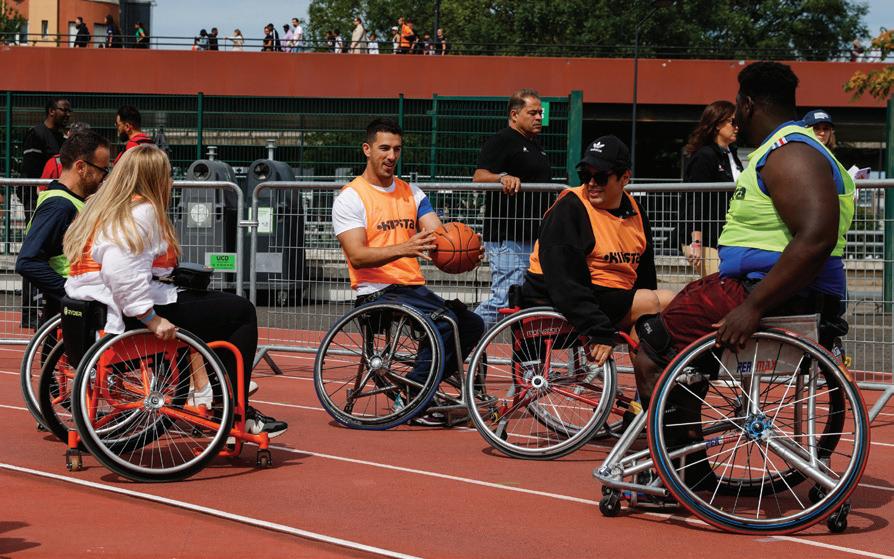
the Olympic Games that CSSC was instrumental in raising funds for competitors to attend, since there was no centralised funding at the time. In 1972 CSSC chair Sir Richard Hayward CBE appealed for ‘generous donations’ to that year’s Olympic Games appeals, asking departmental and area associations to ‘arrange collections’ – and raising nearly £12,000, or about £200,000 in today’s money. This tradition of helping to fund members’ participation in elite sporting events continues today with our numerous financial support packages.
Having hosted the games on two previous occasions, not to mention the 1998 Football World Cup and last year’s Rugby World Cup, Paris offers travellers an exceptional opportunity to witness the finest festival of sport set against some of the most beautiful and iconic backdrops anywhere in the world.
The 33rd Summer Olympic Games promises to showcase the very best of 32 different sports throughout the two weeks of fierce but friendly

competition. However, for the first time in over 60 years there will be slightly fewer events than in previous games.
Traditionally, the host city introduces a new ‘sport’ into the roster, and this year is no exception. So look out for ‘breaking’, also known as ‘breakdancing’, the urban dance style first popularised in the New York suburbs in the 1970s. You might initially feel sceptical about its credentials as a sport – but be prepared to be amazed and mesmerised by the art, athleticism and skill on display. Remember, plenty of other Olympic sports met with similar scepticism at the beginning – see our volleyball feature on page 42!
The modern Paralympics celebrates its 17th games this year. Its humble beginnings were thanks largely to German neurologist Sir Ludwig Guttman, who worked at Stoke Mandeville Hospital.
Sir Ludwig, who treated World War II paraplegic and quadriplegic Royal Air Force veterans, sought a way to rehabilitate his patients. In 1948 he introduced
33rd Summer Olympic Games
10,500 athletes
206 Olympic committees
32 sports

archery and netball sporting events at the hospital to coincide with the London Olympics of that year. The following games in 1952 saw veterans from the Netherlands compete against British teams. And so the International Paralympic Games was born, growing year-on-year to the modern age.
You don’t have to be an Olympian to benefit from CSSC’s funding initiatives
The Paralympics now sees over 4,000 athletes from 184 Paralympic committees competing in 22 sports, in 549 events, over 11 days, watched by 2.8 million ticket holders and millions more spectators on TVs across the world.
While many of our members over the years have competed at the Olympic Games, you don’t have to be an Olympian to benefit from CSSC’s funding initiatives. We offer help to anyone who’d like to get
involved in sport, at all stages and levels, and we are here to help you grow in confidence, gain qualifications and maybe even compete at the highest level internationally. Over the years we have supported many elite athletes and paraathletes to achieve their goals – from runners, rowers, airgun shooters and pool players to weightlifters, archers, sailors, badminton players and many others besides.
Find out more about our exclusive funding opportunities and read our members’ stories of their personal journeys and accomplishments at store. cssc.co.uk/sports-leisure.

329 events
10 Parisian venues
And for those lucky enough to be attending the Olympic and Paralympic Games in Paris this summer (either as a volunteer, spectator or even a competitor), we wish you ‘bonne chance’ and bid you ‘bon voyage’!
1 international venue
10m tickets sold 4bn global viewers
There’s lots of advice about ‘how to stay healthy’, but does it all stand up? What should you stick to and what can you ignore?
By Kaye McIntosh
Want to stay healthy? You must drink two litres of water and eat five pieces of fruit and veg a day. Correct? Well, it may be… but what do the experts really advise?
There are lots of recommended rules for a healthy lifestyle, and many of us like that. “Most of us feel that life is simpler when there is a framework within which we can live, rather than going to the trouble of working it out ourselves,” says psychologist Dr Sandra Wheatley. On the other hand, it’s all too easy (especially today, with a whole wealth of cyber ‘facts’ at our fingertips) to fix on those rules without really checking them.
We put six rules to the test, to see if they’re true or false.
Drink two litres of water a day
VERDICT: false
Water is calorie-free and doesn’t harm your teeth, but other drinks and food count towards your fluid intake too. You don’t need to down two litres on
top of everything else you consume –though be advised that alcoholic drinks definitely don’t count!
In fact the NHS advises six to eight glasses of liquid (not necessarily water) a day – so that’s around 1.2 litres. The European Food Safety Authority goes higher, to two litres – but importantly, that total includes fluid from food.
And bear in mind, too, that other drinks provide important nutrients – milk, in particular, contains calcium, iodine, B vitamins and protein. Tea and coffee contain antioxidants and substances that may reduce internal inflammation, although excess caffeine will increase your heart rate and blood pressure. Some large studies have found

coffee and tea drinking is associated with lower mortality from cancer as well as cardiovascular and respiratory disease. On the other hand, be careful with fruit juices and sweetened drinks as they will sugar-load your teeth (and possibly your waistline).
BOTTOM LINE: don’t obsess over it, and remember that fruit and veg have their own water content.
Take 10,000 steps a day
VERDICT: false
For many people it’s the magic number demanded by their fitness tracker. In fact that’s where it comes from: ‘10,000 steps meter’ was the name of a device sold in Japan in the 1960s.
The evidence suggests we don’t need to panic about that target. In fact one

large study in 2019 found that older women who walked 4,400 steps a day had a 41% reduction in mortality compared to sedentary women.
BOTTOM LINE: pay more attention to getting regular exercise than to exactly how many times your foot hits the ground.

VERDICT: true
Any physical activity is good, but getting fresh air is better, and finding a green space has even more benefits. Just being in nature helps – research has shown people living near parks and green spaces have lower rates of conditions from cardiovascular disease to depression.
One study showed people who went for a 90-minute walk in green spaces reported lower levels of worrying and had reduced activity in areas of the brain linked to risk for mental illness compared with people who walked through an urban environment.
What’s more, we tend to walk faster outdoors even though we don’t realise that we are putting in the extra effort, which could explain why getting outside increases levels of physical activity.
BOTTOM LINE: read our spread on walking (page 27) and give it a go!
Eat five pieces of fruit and veg a day

VERDICT: mainly true
Most of us don’t eat enough fruit and veg to get a range of important nutrients. Five a day reflects research showing benefits from at least 400 grams in total – a portion is one medium apple or a handful of grapes. But frankly, it’s better to
stick with the idea of eating ‘more’ than obsess with five – feel free to go over!
It’s also important to get variety into your diet, and also not to focus entirely on fruit at the expense of veg. Dietitian Frankie Phillips says:
“Vegetables tend to be richer in some nutrients, such as iron and calcium.” Fruit is higher in sugar, too – though that sugar is bound up with fibre so it’s harder to digest than refined sugar (ignore anyone who tells you an apple is on a par with a bag of toffees!). In fact the UK five-a-day rule contrasts with Australian government advice to eat much more veg than fruit.
BOTTOM LINE: aim for five – or more – a day, but different types if possible (the ‘eat a rainbow’ advice is useful here), and give veg star billing.
The fivesecond rule
VERDICT: false It’s true that more germs are transferred the longer contact goes on, but one study found contamination within just five seconds.

the time. The largest real-world study found people who tried eating within a 10-hour window had higher energy and mood and lower hunger levels. Those who stuck to the same time slot every day had better results than people who varied it.
If you don’t want to be so restrictive, dietitian Nichola Ludlam-Raine recommends being firm about taking breaks overnight. “I’m not completely against snacking if you’re hungry, but what I do discourage is mindless eating for long periods of time.” Research links eating in the morning with improved weight management, and scoffing later on with a higher BMI, she adds.

It’s not only the floor – picking up food from worktops or tables is just as risky. In fact, researchers looking at the different surfaces have found that carpet is actually relatively safe; the bacterial growth rates for moist foods was higher on wood, tile and stainless steel., wherever those were.
BOTTOM LINE: there are around 2.4 million reported cases of food poisoning every year in the UK. Dropped food is unlikely to be a major cause, but it’s up to you whether to take the risk.
VERDICT: partly true Our bodies aren’t designed to eat all
“This isn’t necessarily because calories are metabolised any differently (although I wouldn’t recommend eating large volumes of food close to bed for digestion reasons), but rather because of the types of foods – I’m not sure how many people munch on celery sticks watching TV at 9pm!”
BOTTOM LINE: bin the biscuits, and if you’ve never been a breakfaster, this is the time to tell yourself you’re cutting it out for health reasons.
For nutrition guides and help with diet and exercise, explore CSSC life for classes, courses and videos.

Exclusive discounts and deals for civil servants and the public sector.
•Over £300 of FREE instant benefits, every year.
•FREE unlimited entry to Cadw, English Heritage & Kew Gardens all year round.
•FREE entry to National Trust Scotland.
•Over 4,000 savings on your favourite high street and online retailers.
•Discounted family days out and trips.
•Straight forward savings on sports, fitness, equipment & gym memberships.